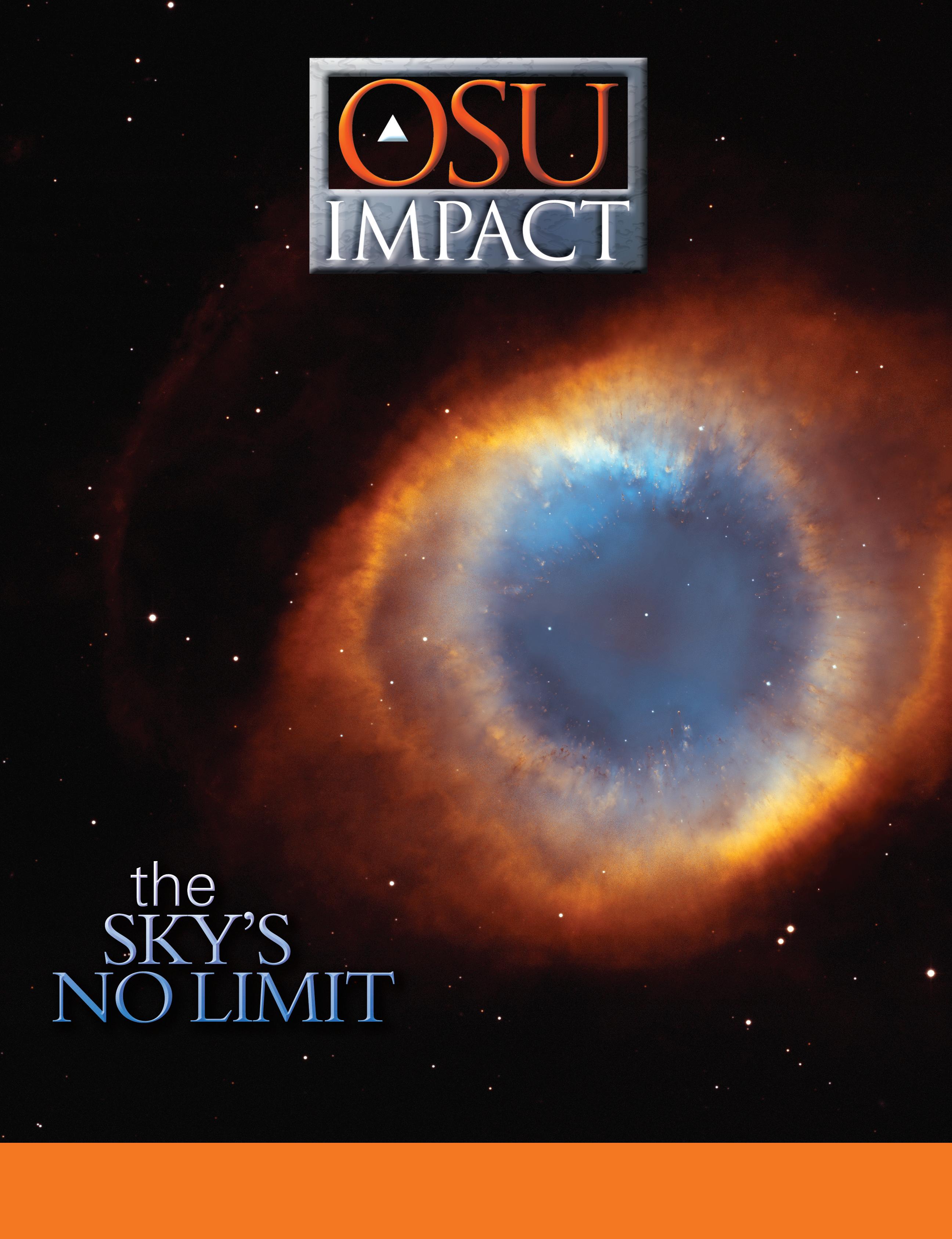
2004 oklahoma state university 2004 oklahoma state university
architecture & technology
engineering,
SKY’S NO LIMIT the the COLLEGE of
Standing in front of the wind tunnel he helped design and build, Andy Arena, Maciula professor in the School of Mechanical and Aerospace Engineering, left, and Karl Reid, dean of the College of Engineering, Architecture and Technology, display OSU’s 2004 winning entries in the American Institute of Aeronautics and Astronautics International Design/Build/Fly Competition.
Putting 2004 in Perspective
Over the years, it has been my great privilege as dean to witness the College of Engineering, Architecture and Technology compile an impressive list of accomplishments to truly become competitive with the best. Impact 2004 features OSU’s contributions to the aerospace industry. The college has produced numerous alumni, such as Don VanLandingham, Ray Booker and Bernard Karen, to name but a few, whose contributions have advanced aerospace exploration and development, and the CEAT continues today to supply the industry with top engineers whose preparation is second to none.
Competing with engineering giants like MIT and Cal Tech, our aerospace engineering capstone classes, like the class of 2004, consistently win the highest honors in the international aircraft design competition. And our graduates continue to be among the most highly sought by

the industry’s leading employers. (Already, as we wrap up production of this 2004 retrospect, the 2005 aerospace teams have placed first and second with no close contenders in the competition.)
Several CEAT teams won top national and international honors in 2004. The year brought first-place wins for the biosystems and agricultural engineering student design team and Cowboy Motorsports as well as a first-place win in national design team competition for OSU chemical engineering students. Many individual students received scholarships and other honors, such as Candice Johnson who was named the 2004 Student Engineer of the Year by the American Society of Agricultural Engineers.
Our student successes signal the caliber of the CEAT faculty and the programs they’ve helped create. For instance, the National Council of Architectural Registration Boards
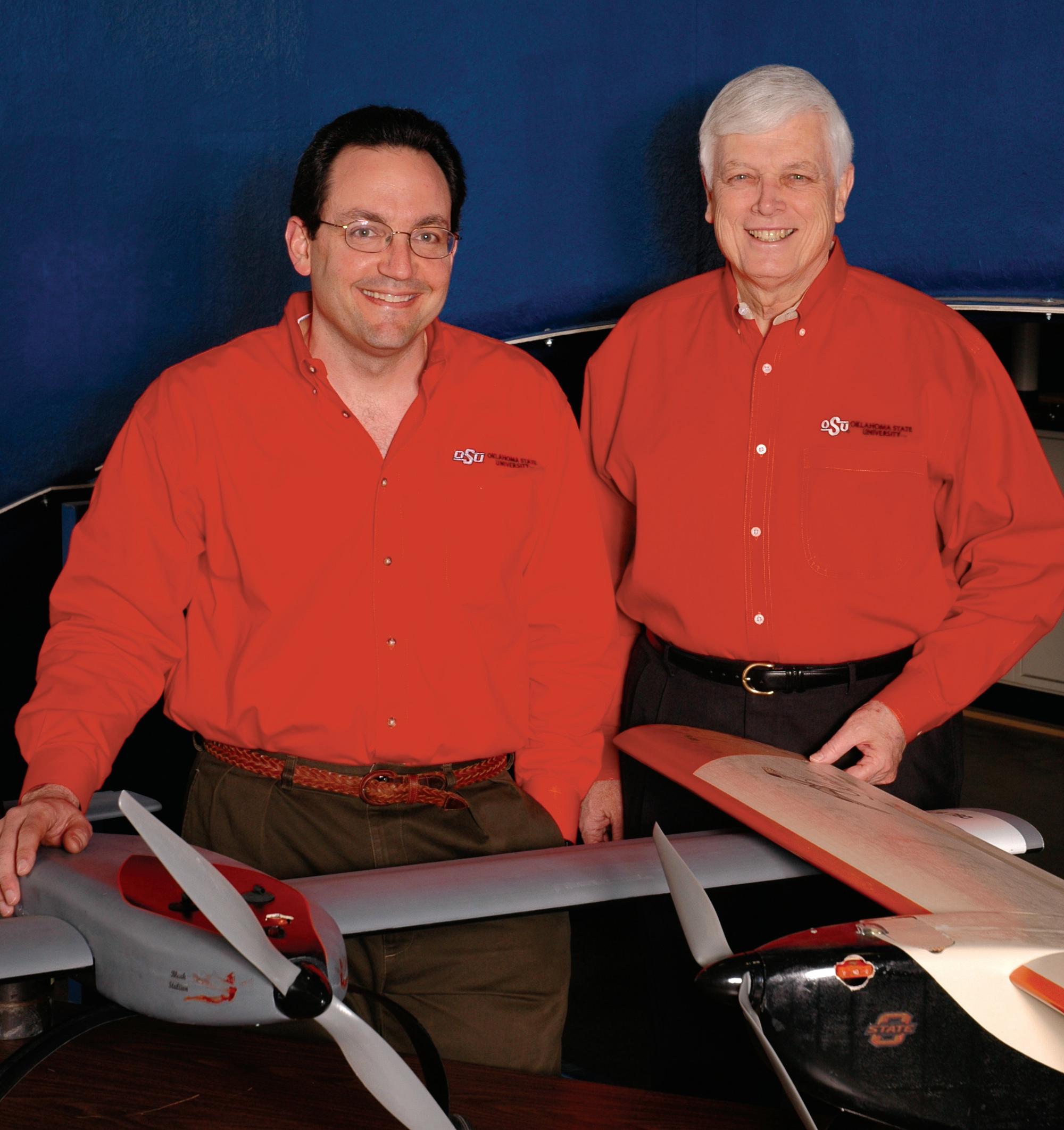
designated the School of Architecture’s capstone studio class the top course offering in the nation, and the national student organization named Mohammed Bilbeisi America’s best architecture teacher.
The Engineering Society for Advancing Mobility in Land, Sea, Air and Space identified Daniel Fisher as one of eight top young engineering educators in the nation. Mike Wieder was awarded Instructor of the Year by the International Society of Fire Service Instructors, and Guoliang Fan and Rafael Fierro received the National Science Foundation’s prestigious CAREER awards. These stories and many others are included in this issue of Impact.
The professionalism, talent and dedication of our faculty as well as the high quality of our programs are readily visible in the EAC/ABET accreditation earned in 2004. Our faculty undertook a demanding, and on-going, fiveyear self-study that required putting forth tremendous effort and time beyond their teaching and research hours. I am both proud and grateful for their effort.
In this issue of Impact, we pay tribute to the achievements of the 2004 Hall of Fame alumni J.D. “Denny” Carreker, Steven D. Hofener and David Kyle and the 2004 Lohmann Medal recipients Edward M. Jones and Neal E. Jones. Faculty and alumni excellence are powerful forces establishing the CEAT’s reputation, just as the support of alumni and friends underpins the CEAT’s commitment to greatness.
Karl Reid, Dean College of Engineering, Architecture and Technology
Erika Contreras
impact 2004
about the cover: Images from NASA’s Hubble Space Telescope, like the one on the cover, take us deep into the universe to see such celestial phenomena as supernovas and the birth and death of galaxies. The Hubble’s immense contributions to astronomy, and science in general, would not have been possible without a team of engineers led by OSU alumnus Don W. Vanlandingham. Their development of COSTAR, a corrective optics device, gave us the Hubble images.
The related story is on page 13. original photo: NASA
i M p A C T
Eileen

What’s InsIde: 2 CEAT student chapters and student teams compete with, and often surpass, the best in their fields. 11 OSU’s partnership with aerospace engineering began early in the history of aeronautics. 13 The creations of CEAT alumni such as Don Van Landingham have changed our world, even our perceptions of the universe. 14 Aerospace engineering’s design/build/fly teams take the nation’s top honors. 20 Many faculty members in the College of Engineering, Architecture and Technology are nationally and internationally acclaimed experts in their fields. 22 Faculty in the School of Electrical and Computer Engineering received the National Science Foundation’s most prestigious and competitive award.
Departments

IMPACT is a publication of the Oklahoma State University College of Engineering, Architecture and Technology and is designed to provide information on college activities and accomplishments while fostering communication among the CEAT family and friends.
Vip iNViTATiON
The CEAT wants you to have access to up-to-date information on everything from the continuing development of the Advanced Technology Research Center to the establishment of new academic programs on the Stillwater campus and in Tulsa.
13


We invite you to be our guest for a VIP visit to campus and the CEAT. Contact Dean Karl Reid by phone at 405-744-5140, by FAX at 405-744-7545, or by e-mail at kreid@okstate.edu. If a trip to campus is not possible, visit us on the CEAT homepage at http://www.ceat.okstate.edu
The office of publication for IMPACT is 121 Cordell North, Stillwater, OK 74078-8031. Copyright © 2005, IMPACT. All rights reserved.
14
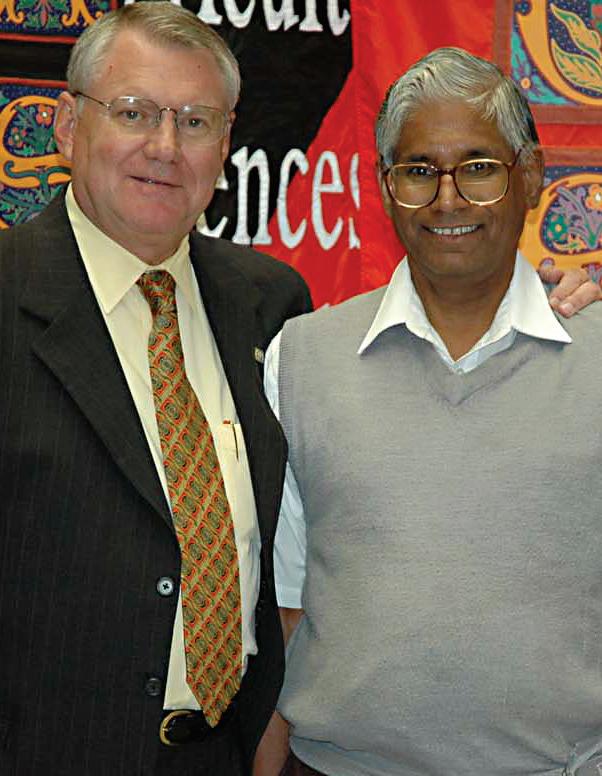
Oklahoma State University in compliance with Title VI and VII of the Civil Rights Act of 1964, Executive Order 11246 as amended, Title IX of the Education Amendments of 1972, Americans with Disabilities Act of 1990, and other federal laws and regulations, does not discriminate on the basis of race, color, national origin, sex, age, religion, disability, or status as a veteran in any of its policies, practices or procedures. This includes but is not limited to admissions, employment, financial aid, and educational services. Title IX of the Education Amendments and Oklahoma State University policy prohibit discrimination in the provision of services of benefits offered by the University based on gender. Any person (student, faculty or staff) who believes that discriminatory practices have been engaged in based upon gender may discuss their concerns and file informal or formal complaints of possible violations of Title IX with the OSU Title IX Coordinator, Dr. Carolyn Hernandez, Director of Affirmative Action, 408 Whitehurst, Oklahoma State University, Stillwater, OK 74078, 405-744-5371 or 405-744-5576 (fax).
This publication, issued by Oklahoma State University as authorized by the College of Engineering, Architecture and Technology, was printed by Creative Services, OU Printing Services at a cost of $10,100.00 16M/Nov. 2005/job# 8964.

20 2 22
Mustain,
editor
Adam Huffer,
Wray, University
are welcome and should be addressed to: Oklahoma State University Editor, IMPACT Magazine 201 ATRC, Stillwater, OK 74078-5013 Student Digest Noteworthy Alumni Success Research, Teaching, Outreach 11 2 8 11 20
Paul V. Fleming, art director Janet Varnum, associate editor
CEAT Communication Specialist Kyle
Marketing Letters

Ready for the Real World
An OSU biosystems and agricultural engineering student design team demonstrated they are ready for the design challenges of the real world with a first place win in the 2004 American Society of Agricultural Engineers National Student Design Competition.
The AGCO contest requires students to employ the design process just as project teams would in an industrial firm. Students in BAE’s two-semester capstone design course select a project from a list of potential projects and sponsors compiled by Paul Weckler, professor and team adviser.
“It’s a real-world problem, and there are small companies in rural Oklahoma that don’t have a full-time engineering staff available to help them,” Weckler says. “Many times the companies really benefit from the students’ work.”
The 2004 winning project, sponsored by Ditch Witch in Perry, Okla., challenged the team to design an effective means for a silt fence installation. Weckler says the students’ outstanding work has led to discussions with Ditch Witch about the possibility and feasibility of patenting the students’ design.
“Winning the AGCO competition shows the state’s taxpayers we are doing things that are really applicable to the real world,” he says.
CourtnEy England
Frontline Recruiters
Although the student ambassador program in the College of Engineering, Architecture and Technology began only a few short years ago in 2002, the program has already become indispensable, says Dean Karl Reid.
“Student ambassadors are our frontline recruiters,” he says.
Students have a generational advantage, according to Karalyn Eyster, mechanical and aerospace engineering student and former president of the ambassador group.
“Generally, students think that adults, such as their parents, don’t understand them, so they are more responsive to peers.”
CEAT student services works closely with OSU admissions to schedule student-guided tours for prospective students and their parents. The CEAT ambassadors, currently 15 engineering students with various majors, are each available to conduct at least one weekly tour ranging in size from three to 10 people.
The ambassadors tailor the tours to the students’ interests. They answer their questions honestly; end the tour with thank you cards and information for further contact and then follow-up student visits with email. They even continue the relationships after prospective students enroll.
“Many freshmen don’t know simple things, such as it’s all right to go talk to a professor,” Eyster says. “We help students succeed after they get here.”
Eyster has no doubt the program is successful. “Numerous students say, ‘I haven’t gotten this anywhere else’ and ‘this makes the difference in deciding where I’m going,’” she says.
Students undergo an application and interview process to become ambassadors. Although being an ambassador can offer a professional networking opportunity, that is not the reason CEAT students become ambassadors, according to Eyster.
“Students love this college and want to share this with others. I did. Being in engineering has made all the difference for me. We are a close-knit group. Because we follow a set progression of classes in our majors, we see more of each other than roommates. We learn to count on each other,” she says.
“Engineering has given me a connection.”
It’s that connection she hopes to give back to the college.
EilEEn Mustain
By candidly sharing their student experiences and taking a personal interest in each prospective student, CEAT ambassadors such as mechanical and aerospace engineering student Karalyn Eyster, left, are successful recruiters for the college.
 Members of the 2004 AGCO competition’s winning design team are, from left, Monica Johnston, Kent Evatt , Candice Johnson and Kody Featherston.
courtesy of BAE
Members of the 2004 AGCO competition’s winning design team are, from left, Monica Johnston, Kent Evatt , Candice Johnson and Kody Featherston.
courtesy of BAE
Student Digest � s OSU iMpACT
Erika Contreras
A Great Year for AIChE
Sometimes good news just gets better, or so it was in 2004 for the OSU student chapter of the American Institute of Chemical Engineers (AIChE).
For the sixth year in a row, AIChE received the outstanding student chapter award, one of 15 in the nation, and Tim Plowman, chemical engineering senior, became one of only 10 recipients nationwide to receive the Donald F. and Mildred Topp Othmer National Scholarship for the 2004-2005 academic year.
One of OSU’s ChemE Car teams, powered by hydrogen peroxide reacting with pureed beef liver, placed first in regional competition. Although the car didn’t win the national championship, it did win several awards at the AIChE national conference, including second place poster, most unique drive mechanism and the Golden Tire Award, the “best car” designation given by all participating students.
Then, for the third time since the contest began 10 years ago, OSU chemical engineering seniors placed first in the AIChE national design team competition.
Megan Burns, Shelby Hutchens and Ashley Price completed the 2004 winning entry as a 30-day project assigned last spring in the school’s senior design course taught by Jan Wagner, professor, and Robert Whiteley, associate professor, in the School of Chemical Engineering.
National champions in AIChE team design competition are, left to right, Megan Burns, Shelby Hutchens and Ashley Price. Price graduated in May 2004 and is now a development engineer at ConocoPhillips; Hutchens is pursuing a graduate degree in bioengineering at Cal Tech; and Burns, who graduated in December 2004, is an environmental engineer with Valero Energy Corp, Ardmore, Okla.
All 150 AIChE chapters in the U.S. may submit design solutions to the competition as long as students complete the challenge within 30 days and without faculty assistance. Engineers in industry and academe jointly author the challenge given to students, Wagner says.
The challenge for Burns, Hutchens and Price was to design an economically viable process for the extraction of biohazardous waste from storage and its conversion into a useful or disposable product.
“The design problem was based on an actual site in Louisiana where ethylchloroacetate was deposited in salt dome caverns 20 years ago. The task involved developing a process to remediate the biohazardous waste extracted from the caverns and leave the storage site in a stable condition,” Wagner says.
“The team competition, a relatively new addition to the long-standing AIChE individual design competitions, emphasizes cooperation and integration and requires students to work on a more comprehensive challenge,” says Russell Rhinehart, Bartlett Chair and head of the school.
“The panel of judges includes experienced chemical engineers from both industry and academe. They ultimately judge the submissions on technical excellence and written communication skills, but the technical, scheduling and economic aspects all must be brought together,” he says.
“Our students’ success in the competition indicates they are able to integrate all of the industrial practice issues as well as properly apply the fundamentals.”
adaM HuffEr

A Strong Finish for Steel Bridge Team
Students in the OSU chapter of the American Society of Civil Engineers placed sixth out of 43 teams in the 2004 finals of the ASCE/American Institute of Steel Construction National Student Steel Bridge Competition.
Civil and environmental engineering students, David Erickson, Brian Sartain, Matt Youngblood, Julie Russell and Brian Cales, earned the bid after winning the ASCE Mid-Continent Conference title in April.
The contest evaluated the number of students and time required to assemble the bridge, the weight of the bridge and the structure’s deflection under loading. OSU’s bridge consisted of 42 pieces and 68 bolts and nuts, weighed 196 pounds and was 26 feet long, 4 feet wide and 2 feet tall.
“Our students won the regional championship with an assembly time of 11 minutes and 58 seconds, but with some modifications and a lot of practice, they got their time down to just over eight minutes in the finals,” says Charles Bowen, assistant professor of civil engineering and the team’s adviser.
The students conceived their bridge design in August 2003 and developed it as an extracurricular project outside of the classroom. In addition to conducting all computer simulations and testing to optimize the strength of the structure and amount of steel used, OSU’s team also fabricated its bridge.
“A stipulation of this contest, unlike many others, is that students at schools that don’t have the laboratory capability can hire someone else to actually construct their design,” Bowen says. “Our students did all the work themselves downstairs in the lab. Their bridge was 100 percent homegrown here at OSU.”
 adaM HuffEr
OSU civil and environmental engineering students, from left, Brian Cales, Brian Sartain, David Erickson, Matt Youngblood and Julie Russell, placed sixth in the 2004 National Student Steel Bridge Competition.
Adam Huffer
adaM HuffEr
OSU civil and environmental engineering students, from left, Brian Cales, Brian Sartain, David Erickson, Matt Youngblood and Julie Russell, placed sixth in the 2004 National Student Steel Bridge Competition.
Adam Huffer
�004 s �
Adam Huffer

OSU chemical engineering alumna Cassie Mitchell, named to the first team of the 2004 All-USA College Academic Team, is the second OSU student selected by USA TODAY as one of the top 20 graduating seniors in America. CEAT alumnus Bryan McLaughlin was among USA TODAY’s top 20 in 2003.
Mitchell, One of the Nation’s Best
Cassie Mit Chell, a gifted high school athlete, taught herself ambidexterity in order to maintain a competitive edge. As a student in OSU’s College of Engineering, Architecture and Technology, she applied the same focused determination to become one of the nation’s brightest undergraduates.
USA TODAY named Mitchell to the first team of the All-USA College Academic Team in February 2004, a designation placing her among the 20 top students graduating from American colleges and universities in 2004.
The Warner, Okla., native was weighing track and field scholarship offers from a number of Division I schools where she hoped to study to become a doctor, but her plans changed when she was diagnosed with progressive multiple sclerosis and confined to a wheelchair at the end of her senior year.
Instead of giving up her dreams of a medical career, Mitchell found

c and I ce Johnson
another avenue into advanced healthcare through the study of engineering. She graduated in May 2004 with a degree in chemical engineering, specializing in the biomedical option, and left behind a stunning scholastic record.
“Our chemical engineering program typically requires five years, but Cassie graduated in four years with the biomedical option, which requires even more hours,” says Russell Rhinehart, Bartlett Chair and head of OSU’s School of Chemical Engineering.
“She completed 150 hours with just one non-A while participating in our ChemKidz outreach program and serving as president of our chemical engineering pre-professional society, AIChE, the student chapter of the American Institute of Chemical Engineers,” Rhinehart says.
Mitchell was a recipient of an OSU Wentz Research Project award, which she applied toward the design of a fluidized-bed popcorn
Johnson Named Number One
CandiCe Johnson, biosystems and agricultural engineering senior, received the 2004 Student Engineer of the Year Scholarship from the American Society of Agricultural Engineers.
ASAE gives the award annually to the outstanding agricultural/biological engineering undergraduate in the U.S. or Canada based on scholarship, character, personal development, student membership in ASAE and leadership.
Johnson, who graduated in December 2004, gained practical experience working with John Solie, OSU research engineer and professor, on projects ranging from electronic control systems and sensors to mechanical transmissions and engines. While working with Deere and Company during the summers, she also gained exposure to marketing, quality, production and design engineering in the agricultural equipment industry.
As a senior Johnson flexed her leadership muscles as the 2003-2004 president of the ASAE Preprofessionals Council, representing student branches at universities throughout the U.S. and Canada.
As a professional Johnson hopes to contribute to the development of new machinery technology to advance farming practices. She is currently employed by Deere and Company in Ankeny, Iowa.
CourtnEy England
popper she built with her faculty mentor, Randy Lewis, professor of chemical engineering. The school’s ChemKidz program uses the innovative device to demonstrate fundamental chemical engineering principles to children.
She also received a 2003 Barry M. Goldwater Scholarship, another national award with a heavy emphasis on undergraduate research experience. Her research included an internship with the Tulsa-based firm Syntroleum where she helped engineers write a FORTRAN program as part of a computer-modeling project for transient operations of chemical reactors. The company is using the program in its effort to develop gas to liquid refineries for the production of ultra-pure, synthetic and inexpensive diesel.
Mitchell is currently working on a master’s degree in biomedical engineering at Georgia Tech University.
adaM HuffEr
 Adam Huffer
Newlin
Adam Huffer
Newlin
4 s OSU iMpACT
Adam Huffer
White Admitted to Prestigious Program
When OSU electrical engineering alumnus Christopher White interviewed for admittance to the Johns Hopkins Center for Language and Speech Processing’s Ph.D. program for fall 2004, his nametag read “Oklahoma.”
“They either didn’t know there are two schools in the state or they didn’t know the difference,” White says, admitting he felt intimidated in the midst of such prestigious tags as MIT, Cambridge, Harvard and Princeton.
He need not have. The 30 faculty and administrators at Johns Hopkins who interviewed White soon learned about the quality of undergraduate education at OSU.
Among the seven students they admitted to the program, White was one of three who received a full scholarship providing year-round living, tuition, fee and book support, summer internship and job placement and funded travel to international and national conferences through the 2010-2011 academic year.
Johns Hopkins offers White the opportunity to apply his undergraduate education in a federally funded center that unites
In addition to earning a full scholarship to the Johns Hopkins Center for Language and Speech Processing’s Ph.D. program, 2004 electrical engineering graduate Christopher White also won the grand prize at the EPSCoR Research Day Summer Undergraduate Research Competition at the Oklahoma state capitol in 2004.

electrical engineering, computer science and cognitive science programs.
“One of the major selling points for Johns Hopkins is its phenomenal biomedical program and collaboration with the worldrenowned hospital there,” White says. White earned the scholarship by demonstrating repeatedly as an OSU undergraduate the ability to work alongside and compete with the nation’s elite graduate researchers. As a CEAT freshman research scholar, he joined OSU’s Speech and Audio Communications Laboratory where Keith Teague, professor and head of the School of Electrical and Computer Engineering and the lab’s director, hired him as a research assistant after just six months.
“Chris has been a full partner working with us, and his name is on a number of technical papers that we’ve had published in journals and presented at conferences,” Teague says. Activities in OSU’s laboratory focus on a massive, Department of Defense-funded project to develop secure communications technologies for the Internet. White used the lab’s focus on secure multi-media over internet or internet protocol as the basis for two undergraduate research projects he completed in OSU’s Wentz research project program.
With Teague’s encouragement, White submitted the results of a study on network performance and analysis to the 37th Asilomar Conference on Signals, Systems and Computers in California in November 2003. He placed fourth out of seven national finalists, the only student not yet working on a Ph.D. to enter a winning paper.
“I’ve really appreciated the diversity here at OSU, and if I were going into lasers or control systems, I’d stay here,” White says.
“Being chosen and beating out people from Harvard, MIT and Cambridge is testament to the work that’s being done in our lab, the talented programmers I’ve worked with here and Dr. Teague’s ability to direct research and support people who want to do research.”
adaM HuffEr
Student Digest Briefs
The ConstruCtion ManageMent teChnology Department’s Home Builders team placed 10th out of 24 teams in the 2004 National Association of Home Builders competition.
The NAHB competition, a pre-designed 150-plus home development in Blair, Minn., required students to prepare an estimate, a schedule, value engineering proposals, management plan, construction site plan, marketing plan and cash flow analysis.
Dana Hobson, head of CMT and the team’s coach, says he considers the placement outstanding, noting this is only the second competition for the OSU Home Builders team that will return four of its six members in 2005.
CMT students also won first place in the construction management team competition and the design/build team competition at the Associated Schools of Construction/Associated General Contractors Region V Student Competition. Team members won five of nine individual presentation honors, including two firsts.

the Ceat s tudent CounCil performed well in the National Association of Engineering Student Councils (NAESC) regional competition, winning Best Activity, Best Philanthropy and, most significantly, the regional Council of the Year Award.
Matthew Engleman, president of the CEAT Student Council, says placing first in a six- state region that includes Kansas, Texas, Arkansas, Missouri and Oklahoma engineering chapters is a significant win. Encouraged, the CEAT group is putting together a strong bid for the National Council of the Year Award in 2005, he says.
Mary elizabeth WoMaCk, biosystems and agricultural engineering senior, received the Reuben Trane Scholarship, the top award from the American Society of Heating, Refrigerating and Air-Conditioning Engineers for the 2004-05 academic year. Womack is one of only three in the nation to receive the two-year $5,000-per-year scholarship.
Chemical engineering graduate student
saMuel o oWusu received a 2004 Instrumentation, Systems and Automation Society (ISA) Educational Foundation Scholarship.
ISA awarded the $2,500 scholarship to Owusu, a Ph.D. candidate, because he shows outstanding potential for contributions to the field. His research involves investigating and analyzing techniques for autonomous computer monitoring of process controllers.
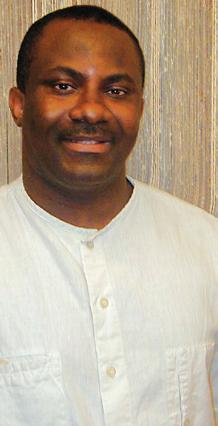
tiM ploWMan, chemical engineering senior, received the Donald F. and Mildred Topp Othmer National Scholarship for the 2004-05 academic year. The scholarship is the American Institute of Chemical Engineers’ (AIChE’s) annual recognition of the top 10 chemical engineering scholars in the country.

Plowman, the current president of OSU’s student AIChE chapter is the sixth student from the School of Chemical Engineering to receive the $1,000 award in the past seven years.
Left to right, James Sexton, Cory Muir, Angela Suarez, Jennifer Midkiff, Will Cates and Eric Mariconda are members of the 2004 Home Builders team.
photos/courtesy chemical engineering �004 s �
courtesy of CMT
Student Outreach Program Nets NEA Funding
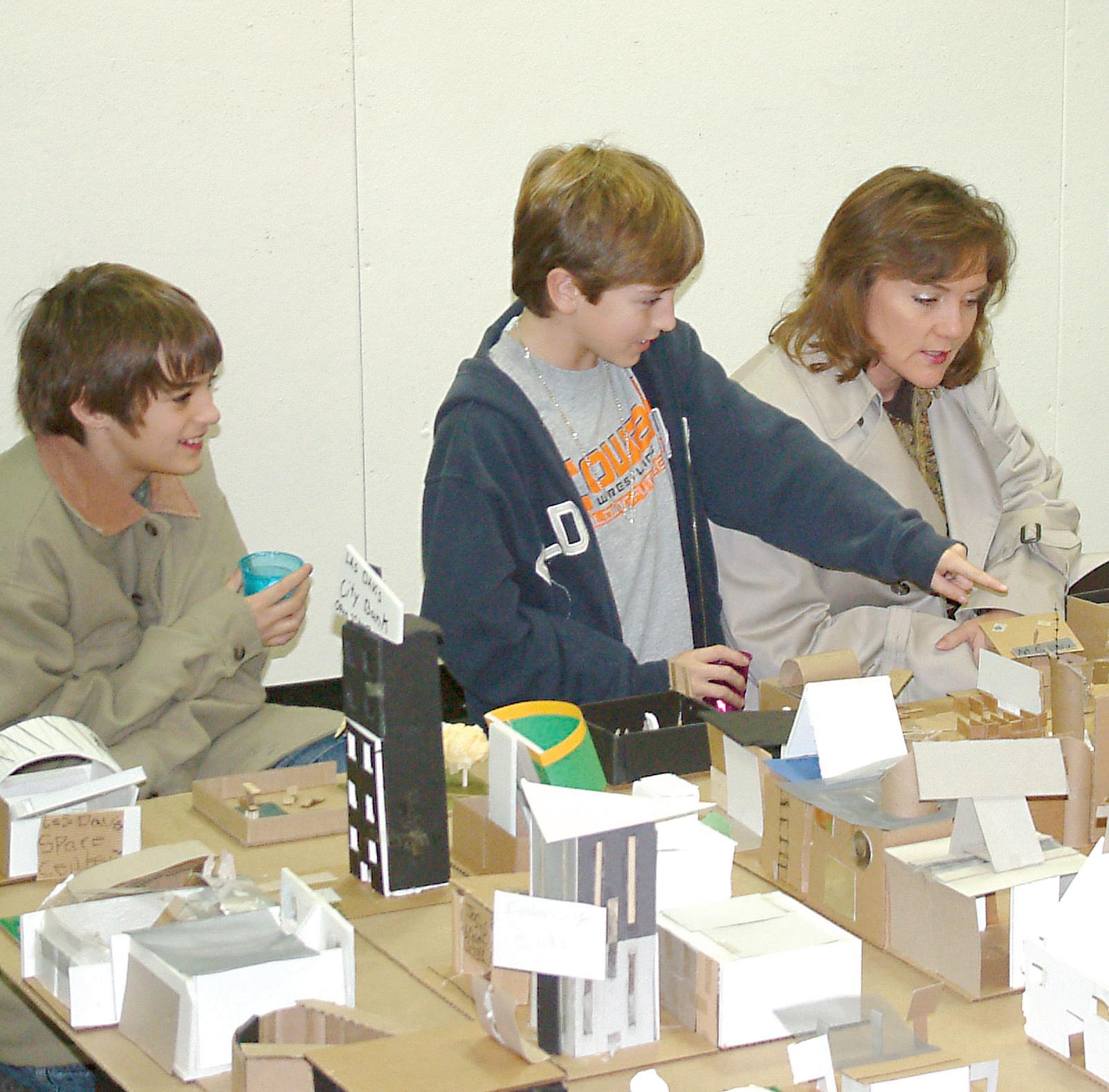
Fifth-grader Vincent Sorrentino describes his class’s city model to his mother, Missy Sorrentino. Taught by OSU architecture students, Stillwater’s fifth grade students learn art and fundamental design in the Architecture Students Teaching Elementary Kids program, one of only five Oklahoma initiatives to receive a grant from the National Endowment for the Arts in 2004.
Fifth-grade students in Stillwater’s six public elementary schools don’t necessarily realize they’re learning the fundamental concepts of architectural design when OSU architecture students visit their classes one hour a week.
They’re too busy exploring texture, materials and shapes and constructing cardboard models of buildings that will make up the miniature city they design at the end of the nine-week course.
Members of the OSU chapter of the American Institute of Architecture conceived the community outreach program, Architecture Students Teaching Elementary Kids (ASTEK), in 1999 to help prepare area fifth-graders for art questions on standardized tests. They work from a 60-page workbook written and published by OSU students.
A hit with fifth-graders, ASTEK also earned a “thumbs up” in 2004 with a one-time $5,000 grant from the National Endowment for the Arts. The NEA grant is a boon to the program, which has relied almost entirely on student support, says Suzanne Bilbeisi, associate professor of architecture and the program’s faculty adviser.
“The students not only publish the workbooks, but they also secure the model building materials and volunteer at least two hours a week to be with the fifth-graders,”
Bilbeisi says. “The NEA grant will fund a number of enhancements to ASTEK.”
She says the group plans to construct durable, transportable and reusable base models for the cityscapes, create high-quality visual aids illustrating well-known architectural works and bring Oklahoma architects to visit the Stillwater classrooms.
 courtesy Cowboy Motorsports
adaM HuffEr
courtesy Cowboy Motorsports
adaM HuffEr
� s OSU iMpACT
Adam Huffer
A FIRST Engineering Experience
When high school biology teacher Tonya (Lewis) Scott organized a robotics team for students at Ponca City High School in 1999, the team’s mentors included two NASA scientists as well as engineers from nearby ConocoPhillips.
That year the team won the national Rookie All-Star Award, and each successive year the Ponca City high school team has brought home regional and national awards, no doubt because of the team’s outstanding mentors and the students’ youthful enthusiasm.
But Scott says one crucial element of the team’s repeated success has been the involvement of OSU engineering student mentors who inspire the high school students to discover their own potential and realize that a career in engineering is within their reach.
“High school students look up to the college students, who may be only four or five years older and are already doing incredible things, and they realize, ‘I can do this, too,’” says Scott, a 1995 OSU graduate in secondary education with an emphasis in science who is pursuing a master’s degree in educational leadership.
FIRST (For Inspiration and Recognition of Science and Technology) was founded by inventor Dean Kamen to inspire an appreciation of science and technology in young people. Based in Manchester, N.H., the non-profit organization designs accessible, innovative programs such as the FIRST Robotics Competition to build self-confidence, knowledge and life skills while motivating young people to pursue opportunities in science, technology and engineering.
Ponca City senior Denisse Sandoval says three OSU students, Brock Crews, Joe Hershberger and Chris White, who mentored the team in 2004, were helpful and fun.
“They were great guys who brought in great energy,” Sandoval says. “They acted like older brothers who were always fun to joke with and learn something new from, such as how to program our robot.”
Crews, a graduate student in mechanical engineering, says the high school students’ level of knowledge impressed him, and their enthusiasm reminded him of how fun science can be.
Each team spends a couple of months brainstorming about the robot design, and when the kit finally arrives from US FIRST with the motor, electric gyros, sensor chips and other assorted parts, the build stage begins.
The teams have six weeks to design, build and program their robot before mailing it to the competition site by a mid-February deadline. The robot is locked in storage until the teams converge in late March/early April to compete against each other in randomly-paired teams. The scoring is very complex and the rules change from year to year, Scott says, and the winning teams progress to national finals competition in late April.
Robots are never recycled or reused in competition, so each year the team has to start from scratch.
“Kids always ask me how what they’re learning in the classroom is relevant to their life and future,” she says. “But they never ask that question while they’re working on the robotics team.
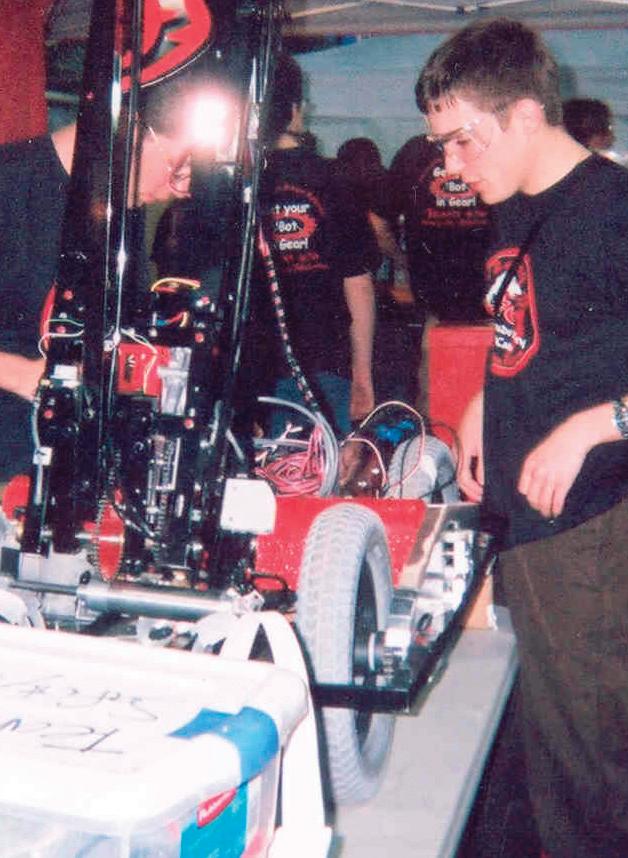
“The robot is the tool, but the real product is the kids’ experience. They constantly build, drive, break and fix the robot. Most kids really get into it. You can’t keep them away from the lab.”
Scott says there’s a place for everyone on the team, whether a student is interested in engineering or any other role such as publicity, organizing meetings, raising travel money, serving as historian or generating enthusiasm and spirit.
“There’s something for everyone to do, and usually they all pick up a little bit of engineering knowledge along the way,” Scott says.
JanEt VarnuM
Students Pull Victory in Design Competition
Placing first out of 29 colleges and universities in the U.S. and Canada, the OSU School of Biosystems and Agricultural Engineering’s Cowboy Motorsports team won the 2004 ¼-Scale Tractor Student Design Competition sponsored by the Society for Engineering in Agricultural, Food and Biological Systems (ASAE).
The competition involves building a small, cost-effective tractor to pull a 5,500-pound sled. All teams must use identical 16-horsepower Briggs and Stratton engines, supplied by the company, so the design challenge essentially centers on optimizing drive train performance.
The Cowboy Motorsports team won the international ASAE ¼-Scale Tractor Student Design Competition. OSU students also placed first in a junior varsity pairing dubbed the X-team Competition that featured 11 squads of freshmen and sophomores competing with modified tractors from the 2003 contest.
For the 2004 four-wheel drive tractor, Cowboy Motorsports improved on an infinitely variable transmission design conceived in 2001 by former team members and biosystems and agricultural engineering alumni Stuart Reid and Jake Holloway.
“Alumni contributions have been vital to the team’s steady improvement from an 11th-place finish in 2001 to first in 2004,” says John Solie, biosystems and agricultural engineering professor and Cowboy Motorsports faculty adviser.
“This is the seventh year our students have competed, and they pass down knowledge to the next class,” Solie says. “Cowboy Motorsports teams have gotten better every year, and what our alumni started has turned into a national championship. A lot of people can take ownership in this sport.”
Success in design competition lends to the university’s prestige, but the individual benefits for participants are much more tangible, according to Solie.
“Indirectly, the win enhances the reputation of the department and the university, but a competition like this gives our students hands-on, practical experience they can’t necessarily get in the classroom,” he says.
“Contest sponsors like Caterpillar, John Deere, Kubota, New Holland North America and other companies hire our students as interns with hopes of employing them after graduation, in large part due to what they learn building these tractors.”
adaM HuffEr and trisH gEdon
OSU engineering students Joe Herschberger, left, and Chris White prepare Ponca City students’ robot for competition in the FIRST 2004 regional in Houston, Texas.
FOR
MORE INFO, VISIT usFirst.org
courtesy �004 s �
the Ceat hall oF FaMe reCognizes osu graduates as Well as individuals Who have enhanCed the reputation oF the College through their Careers in eduCation, industry and the publiC seCtor.
previous induCtees inClude one-tiMe aMeriCan gas assoCiation president george l aWrenCe, ForMer kerr-MCgee ChairMan Frank MCpherson and eason h leonard, Founding partner oF i.M. pei & partners.
“all are legends in their Fields and share a CoMMon set oF qualities inCluding Modesty and integrity, dignity and quiet leadership, aspiration and perseveranCe and sound JudgMent and vision,” says karl reid, dean oF the College.
in 2004 the Ceat paid tribute to the aChieveMents oF aluMni J.d. “denny” Carreker, s teven d hoFener and david kyle.

A Golden Year for Hall of Fame
J.d. (denny) Carreker Jr.
A new congressional law went into effect in October 2004 that forever changed banking globally. Combined with new, innovative image exchange technologies developed by the Dallas-based Carreker Corporation, the legislation called “Check 21,” allows for the electronic processing of digitized checks between financial institutions in near real-time.
This giant step toward the complete automation and safeguarding of transactions is one reason the College of Engineering, Architecture and Technology inducted J.D. (Denny) Carreker Jr., into the CEAT Hall of Fame.
Carreker, founder, chairman and chief executive officer of Carreker Corporation, obtained both a bachelor’s and a master’s degree in industrial engineering and management at OSU and parlayed that engineering education into a successful career as entrepreneur and businessman.
Carreker Corporation, founded in 1978, is the world’s largest technology provider in check operations. Headquartered in Dallas with offices in London and Sydney, it offers new technologies and consulting services to financial institutions, including 75 of the 100 largest banks in the U.S., and has more than 250 clients on five continents.
The Oklahoma City native started his company with a secretary and one junior consultant and now employs approximately 560 people worldwide and generates $129 million in annual revenue.
The Carreker Corporation became publicly traded in 1998, the same year it reached $56 million in annual revenue, and used proceeds from a second public offering in 2000 to acquire an image archiving company. It made Fortune magazine’s list of the “Top 100 Fastest Growing Companies” and ranked 50th on Forbes’ “Best Small Companies” and 75th on Business Week’s “Hot Growth Companies.”
Ernst and Young named Carreker 2001 E-Commerce Entrepreneur of the Year and American Banker included him among the “Top 25 Technology
Consultants.”
Recognized for his influence on modern banking and his company’s status as a global thought leader in payments technology, Carreker frequently serves as an expert witness before Congress and consultant to the Federal Reserve. Influential industry organizations he founded, such as the Electronic Check ClearingHouse Organization, have helped shape the payment system and the role of banks.
s teven d hoFener
Steven D. Hofener never had any doubts he would become a transportation engineer. His role model was his father, Harold. However, unlike his dad whose 40 years in traffic engineering were spent with the city of Tulsa and the Oklahoma Department of Transportation, the younger Hofener had designs on a career that would include diverse experiences from time spent in university research, the public sector and consulting. His education at OSU set the stage for that to happen.
In the School of Civil and Environmental Engineering, Hofener’s work for the ODOT design squad instilled a love of seeing projects through from design to construction to working operation. Faculty members such as Allen Kelley, Rich DeVries, Phil Manke and Bill Dawkins also made a lasting impression on him.
A brief tenure at the Texas Transportation Institute followed by employment as traffic engineer and chief traffic engineer for Oklahoma City taught Hofener the importance of completing projects on time and within budget without sacrificing quality. These became hallmarks of Traffic Engineering Consultants Inc., the firm he started when he entered the private sector.
TEC exemplifies the ideals of its founder by acquiring the skill and knowledge required to solve complex transportation planning and design issues. Once a one-man operation, the firm now has offices in Oklahoma City and Tulsa and has made an indelible imprint on transportation throughout the Midwest
Alumni Success � s OSU iMpACT
and the world.
TEC involvement in Oklahoma projects includes the Oklahoma City MAPS project; construction of the Creek, Cherokee, Kilpatrick and Chickasaw turnpikes; the widening of the Broken Arrow Expressway in Tulsa; and the widening of the Broadway Extension and replacement of the elevated I-40 cross-town expressway in Oklahoma City, to name just a few. Nationally, TEC is one of three traffic engineering firms Wal-Mart uses for special projects.
So revered is Hofener for his leadership abilities and service to his profession the Institute of Transportation Engineers elected him president to represent more than 16,000 traffic and transportation professionals in 90 countries around the world. Hofener also actively supports education of future engineers through interaction with ITE student chapters at nine different universities.
In a field where projects are typically only noticed if they fail to improve the movement of people and goods from place to place, Hofener’s career works are lasting, vibrant reminders that engineers shape the world and touch lives.
david kyle
Friends and colleagues describe David Kyle as a man respected and appreciated for his business acumen and personal integrity.
The president, chairman and CEO of ONEOK Inc. says that he makes decisions in the best interest of ONEOK, its stakeholders and employees. If you ask him, he’s “just an ordinary Joe who makes the most of what the good Lord provided.”
Starting initially as entry-level engineers with ONEOK subsidiary, Oklahoma Natural Gas, Kyle and Larry Brummett progressed up through the ranks because of a friendship that allowed them to bring fresh ideas and approaches to their work.
“People who aspire to be successful,” Kyle says, “should find associates with common goals and cooperatively, not competitively, pour their talents into the
business.”
Ultimately, with Brummett serving as chairman of the board and Kyle as president and chief operating officer, they set about transforming ONEOK, a small, regional utility, into a fully diversified energy company.
Although Brummett lost his battle with cancer in 2000, Kyle has continued to guide ONEOK with an aggressive philosophy of diversification and acquisition that has led to its exponential growth. It is currently one of just five New York Stock Exchange-listed companies headquartered in Oklahoma.
Net income for ONEOK in 2004 exceeded $225 million, more than six times its income just 10 years ago. In 1994, ONEOK employed 2,000 people, and today its labor force includes more than 4,000 employees. Added to ONG, the acquisitions of Texas Gas Service and Kansas Gas Service under Kyle’s leadership made ONEOK the nation’s fifth-largest natural gas distributor with almost two million customers.
ONG president and fellow CEAT alumnus Sam Combs writes that during Kyle’s tenure as its leader, ONEOK has not only expanded dramatically and rede fi ned its focus, the company has also demonstrated commitment to community and customer service, earning the Southern Gas Association’s 2004 Community Service Award. Its marketing company, ONEOK Energy Services, ranked highest in customer service in the most recent national Gas Marketing Satisfaction Survey.
Kyle, son of a general engineering CEAT alumnus, says part of his overall approach to business stems from principles he learned in the School of Industrial Engineering and Management at OSU. He says the industrial engineering program combined the engineering approach to problem solving with business management principles.
Kyle says he is also appreciative of the opportunity he received 30 years ago to join a company where he continues to enjoy the people, the work and the business.




storiEs by adaM HuffEr the 2004 induCtion Marks the 50th anniversary oF the Ceat hall oF FaMe. this riCh 50-year tradition is a testaMent both to Ceat’s exCeptional graduates and the prograMs and FaCulty that Cultivated theM a trendsetter as Well, the “division oF engineering hall oF FaMe” Was the First instituted on the osu CaMpus, and When the aluMni assoCiation initiated the aluMni hall oF FaMe t Wo years later in 1956, three oF the First Five aluMni honored Were engineering graduates.
s teven d h ofener
d av I d Kyle
courtesy courtesy
J. d . ( d enny) c arre K er Jr. �004 s �
courtesy

Edward
exemplify the type person for whom the Melvin R. Lohmann
was intended. Both are distinguished graduates who have made contributions to their professions that merit the highest recognition. Individually, the Jones brothers would certainly have been good architects, but theirs is a partnership marked by greatness. Their careers intertwine so indispensably that the College of Engineering, Architecture and Technology honored both with the 2004 Melvin R. Lohmann Medal.

Edward and Neal Jones Receive CEAT’s Highest Honor
The works of edWard M. Jones, a 1973 graduate of the OSU School of Architecture, represent some of the most positive and influential directions in American architecture today. As founder and principal architect of Jones Studio Inc., he is half a team that one day may be cited for doing more to advance environmental conscientiousness and sustainability in building design and construction than any other practitioners of this era.
Eddie says he began to incorporate recyclable and renewable building materials in his designs because Jones Studio’s early clients could afford little else. Since he started the firm in his Phoenix home in 1979, his projects have functionally and aesthetically celebrated the tradition, culture, climate and topography of the Sonoran Desert.
His projects communicate a clear message about energy efficiency and environmental sensitivity through an abundant use of glass, thoughtful site positioning to exploit day-lighting and structural innovations that facilitate passive heating and cooling.
Jones Studio emerged at the national forefront of “eco” or “green” architecture in 1994 with the opening of the Arizona Public Service Environmental Showcase Home in North Phoenix, a project Eddie and his brother Neal spent more than a year researching before they designed it.
Intended as a showcase to inspire area builders and home buyers to consider environmentally sensitive designs and construction technologies, the APS home attracted visitor for more than six years, was
featured in publications such as National Geographic and won 14 architectural awards, including the National Eco Grand Prize in 1996 for North America’s No. 1 sustainable design project.
Eddie oversees all functional and aesthetic design elements of every project by Jones Studio, which has won 120 major design awards. A registered professional architect in Arizona, California, Nevada and Washington, he has held numerous adjunct professorships and is frequently invited to appear as a competition jurist, lecturer or presenter at universities and professional design symposiums and conferences.
As a young boy, neal e. Jones, a 1977 graduate of the OSU School of Architecture, demonstrated a precocious interest in architecture and an exceptional ability to draw. He decided to study architecture, and just as their father had advised his brother, Edward, to go to OSU, Neal says there was no other choice for him.
His adviser and professor, George Chamberlain, subsequently urged Neal to pursue dual master’s degrees in architecture and business administration at the University of Illinois, a decision he says changed his life.
In 1986, Neal joined his brother, Eddie, in the Phoenix architecture firm Jones Studio. Neal brought to Jones Studio his own formidable architectural skills as well as incomparable marketing savvy, forming what he and his brother characterize as “a dynamic tension unified in an enthusiasm for architecture.” Although Jones Studio now employs 11 professional staff, the firm is still defined by this polarity.
As president of Jones Studio Inc., Neal has demonstrated that an architecture firm can be uncompromising in its adherence to ambitious design principles and still be an immensely successful business. During the recession of the late 1980s, he obtained work for Jones Studio by getting on vendor lists for local and state government projects. While the firm’s captivating designs for structures such as the visitor center at Homolovi Ruins State Park and the Arizona Veterans Memorial Coliseum looked expensive, Neal kept costs down by devising alternative construction methods and materials.
The high-quality, low-cost combination appealed to both public and private clients. Neal successfully negotiated much largerscale endeavors such as the corporate headquarters and training facility for the Arizona Cardinals. Jones Studio’s continued exploration of the use of sustainable and alternative construction methods and materials has only enhanced the firm’s reputation.
In addition to overseeing all of Jones Studio’s administrative, financial and marketing affairs, Neal is responsible for directing its project team in the overall design and management and working with clients on project objectives and delivery of services.
Now, more than two decades after George Chamberlain told him not to listen to naysayers who said combining degrees in business and architecture was a waste of time, Neal is a frequent guest lecturer at colleges and universities on professional architecture practice and business management.
adaM HuffEr
 Brothers
M. Jones and Neal E. Jones of Jones Studio Inc. each
Medal
CEAT Dean Karl Reid, left, and Randy Seitsinger, head of the School of Architecture, right, celebrate the careers of architects Neal Jones and Edward Jones, center, at the Lohmann Medal Award ceremony in 2004.
Adam Huffer
Brothers
M. Jones and Neal E. Jones of Jones Studio Inc. each
Medal
CEAT Dean Karl Reid, left, and Randy Seitsinger, head of the School of Architecture, right, celebrate the careers of architects Neal Jones and Edward Jones, center, at the Lohmann Medal Award ceremony in 2004.
Adam Huffer
10 s OSU iMpACT
There from the Beginning
even before oklahoman Wiley post flew solo around the world in 1933, the osu curriculum included an aerospace program. the mechanical engineering department began offering a degree option in aeronautical engineering in 1929, making the program the state’s oldest and ushering in a vibrant relationship between osu and the aerospace industry.
aviation developments in oklahoma impacted the program from its inception. the growth in the spartan school of aeronautics in tulsa and the establishment of t inker air Force base in oklahoma City led to a rapid growth of the new aeronautical engineering program during its early years.
later, in 1960, as oklahomans began playing a significant role in the growth of space exploration and the development of space technology, osu’s aeronautical engineering degree option was fully accredited as a
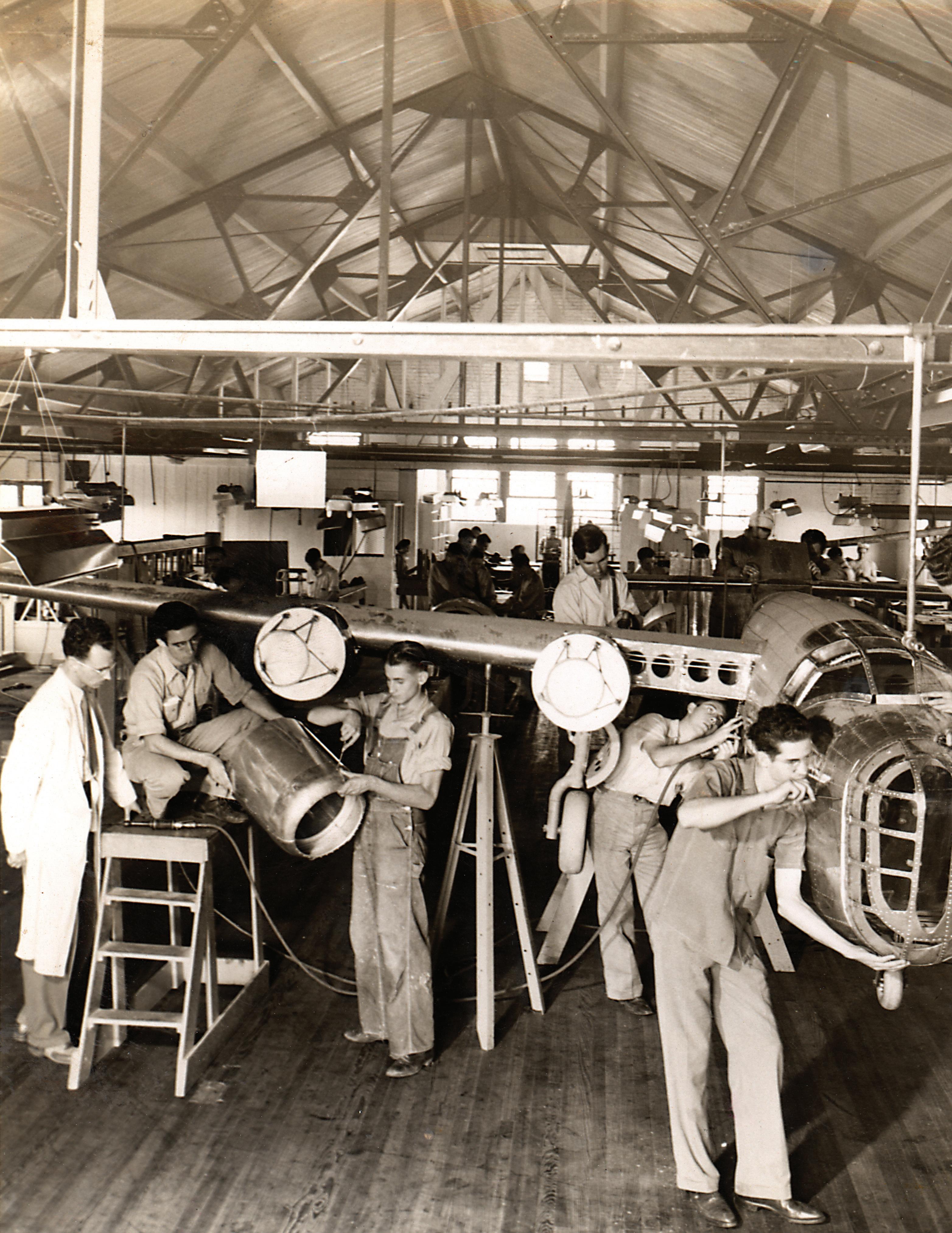
standalone curriculum. in 1968, the college officially changed the name to aerospace engineering to reflect the broadening of the field and the growing importance of space-related engineering in the state.
today, osu’s aerospace engineering program is growing in enrollment, retention rate and popularity, according to andy arena, professor in the school of Mechanical and aerospace engineering. he attributes the increased interest to the aerospace industry’s importance to the state’s economy.
aerospace is now the largest industry in oklahoma with approximately 500 companies that employ some 143,000. the industry generates a payroll of almost $5 billion and an industry output of nearly $13 billion.
“oklahoma has a long aerospace history and we want to support that,” arena says.
photos/Edmon Low Archive Research, Teaching, Outreach
�004 s 11
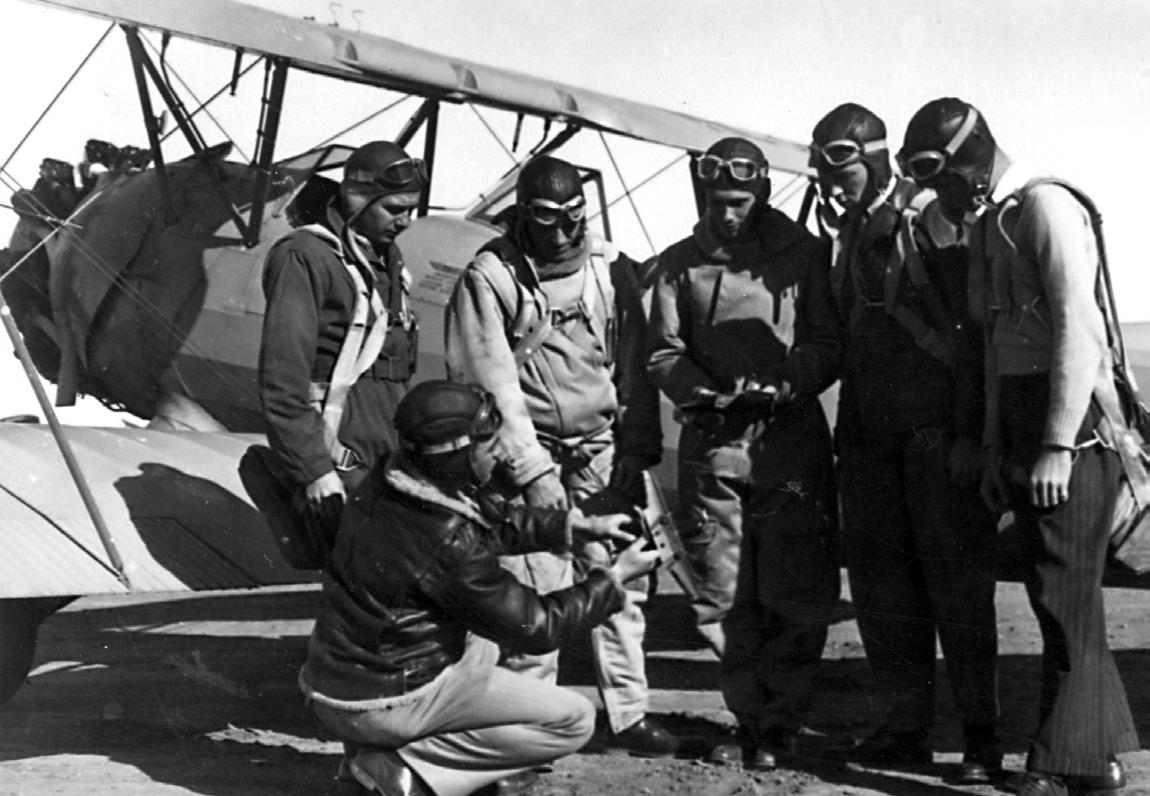
Growing a Reputation
in 1939, osu’s aerospaCe engineering initiated a Civilian Flight-training prograM, WhiCh later led to the developMent oF a Flight sChool. the pilots graduating FroM the Civilian Flight-training prograM beC aMe Military pilots during World War ii.

In fact, more pilots from OSU entered into military service than from any other U.S. school, the Civil Aeronautics Authority reported in 1942. The CAA also noted that prior to the time of the report, none of these pilots “washed out” of the Army Air Corp pilot training program.
Like these pilots trained by OSU’s aeronautical engineering program, today’s engineering graduates also enjoy a reputation for quality and with good reason.
“Aerospace engineering is the beneficiary of a strong mechanical engineering department that
nurtures design and a curriculum committed to hands-on, practical engineering and design experience that eases transition from school to work,” Arena says.
“Most of our students have multiple employment opportunities and are recruited from coast to coast. Companies specifically seek OSU students,” he says.
OSU’s contribution to the aerospace industry is not limited to aerospace engineering graduates, Arena says. The industry also hires many of OSU’s electrical and mechanical engineers.
“I think the greatest contribution OSU provides the industry are the self-sufficient, very talented and very well-tested engineers they continue to crank out into the aerospace community. They provide great resources,” says alumnus Nick Scocos, flight test engineer for Cessna Aircraft Company.
“I’d rather have five OSU alumni than 15 engineers from any other school. There’s just no comparison.”


1� s OSU iMpACT
OSU Engineers: A Sampling
aluMni FroM the osu College oF engineering, arChiteCture and teChnology have inFluenCed and C ontinue to inFluenCe the aerospaCe industry, C ontributing everything FroM roCkets to optiCs to unManned vehiCles to spaCe tourisM. here are Just a FeW oF those aluMni.
donald W. vanlandinghaM
Following its deployment in 1990, the Hubble Space Telescope delivered opaque images that might have scuttled its mission had not alumnus Don Vanlandingham and a team of Ball Aerospace and Technology Corporation engineers under his direction developed COSTAR, a corrective optics device.
Astronauts replaced the defective part with a device developed by Vanlandingham’s team in 1993. The successful repair allowed the Hubble to make an enormous contribution to scientific knowledge and to the world’s view of the universe and made
ray booker
Ray Booker, engineer, meteorologist and pilot, started a company in his garage in 1974 and turned his propensity for pioneering work in the field of airborne instruments and measurements into a multi-million dollar company, the Tulsabased Aeromet.
In the mid-’80s, when the U.S. military sought an unmanned aircraft to operate in hazardous areas, Booker developed the first auto-landing, remotely-piloted vehicle ever built.
The Autonomous Unmanned Reconnaissance Aircraft, the AURA, could monitor its own health, make decisions in certain

Ball Aerospace the source for instruments used to outfit Hubble on the three return trips after 1993.
During his tenure at Ball Aerospace, first as vice president of electro-optical subsystems and later as president and CEO, Vanlandingham participated in the development of some of the most notable engineering achievements in space exploration, Star Tracker, Space Shuttle programs and Celestial Navigation products.

robert n brasWell
Robert Braswell’s exceptional 50-year career yields a prodigious list of accomplishments. He has excelled as an educator and engineer, earning some 213 honors and citations, many for space exploration facilities and air-to-air missile development.
He helped design and develop of an unguided inter-continental ballistic missile, a second generation unguided ballistic missile and an anti-missile system to intercept ballistic missiles.
As the project designer for the Manned Lunar Landing Program location, he helped design and develop

pre-programmed situations and take updated instructions during the mission. Before the military discontinued the program, Aeromet developed and tested three AURA aircraft.
Aeromet also developed an extremely accurate and sensitive airborne tracking system with extensive data processing and recording capabilities to track and photograph both target and interceptor missiles, which is today a vital component of the developing National Missile Defense System.
the John F. Kennedy Space Center and later received a NASA technical excellence award for his contributions as lead designer of the facilities, logistics and support systems.
NASA also cited him for outstanding service in the systems approach and the systems engineering process. Braswell was the lead designer for the first “Lunar Buggy” used for moon exploration.

bernard karen

Bernard Karen, while working at North American and later at Rocketdyne, interacted frequently with one of the world’s most important rocket developers and champions for space exploration, Wernher von Braun.
Karen was in charge of testing and maintaining many of the rocket engines that propelled our country forward into space, including the Saturn rocket that was used as a launch vehicle for the Apollo missions. Some of Karen’s other projects included rocket engines for the Redstone, Atlas and Titan.
Karen later worked for Lockheed, now Lockheed Martin, where he designed the company’s smallest rocket engine.
Karen also wrote and published a famous article concerning rocketry and manned lunar flight. The article, titled “Propulsion Capabilities for Lunar Missions,” was published in Manned Lunar Flight, volume 10, of the Advances in Astronautical Sciences series.
... and More
And then there’s JaCk lee, owner of Jamco Aerospace Inc., a Long Island, N.Y. company that fabricates components such as bulkheads, longerans, tail rotor pitch controls, track assemblies and other critical parts for commercial and military aircraft. The high quality of Lee’s products has grown the company from 18 to 60 employees and a $5 million to a $14 million annual sales.
And randall rule, who is a member of the board of directors and the largest investor in Space Adventures Ltd., a company paving the way for space tourism. Space Adventures, the only company in the world operating commercial orbital spaceflights, arranged the flights of the first and second space tourists, American Dennis Tito in 2001 and South African Mark Shuttleworth in 2002, who each spent eight days in space visiting the International Space Station.
And then there’s 2003 graduate Cassie John JaCkson, honored by a concurrent resolution of the Oklahoma legislature for her achievements as an NASA intern and now as an employee working to develop fuel cell technology to enable a manned mission to Mars ... and many, many others.
EilEEn Mustain
�004 s 1�
It’s the Passion
Ask andy arena why his aerospace senior design students consistently compete well in AIAA competition, and he’ll say he has good students with a strong work ethic.
But they don’t give up. You’ll see them at 4 a.m. working on their plane.”
None have quit. Some have even survived it.
“The four months I worked on the capstone design
because they’ve been conditioned to outperform almost everybody. They’ve been forced to develop a strong work ethic through the workload required of them and I mean that in a very good way, now
“Time costs money, and no manager is going to spend any more money than is absolutely necessary. You say a program will take 21 months? Do it in 17. You say it will take you 18 months. You have
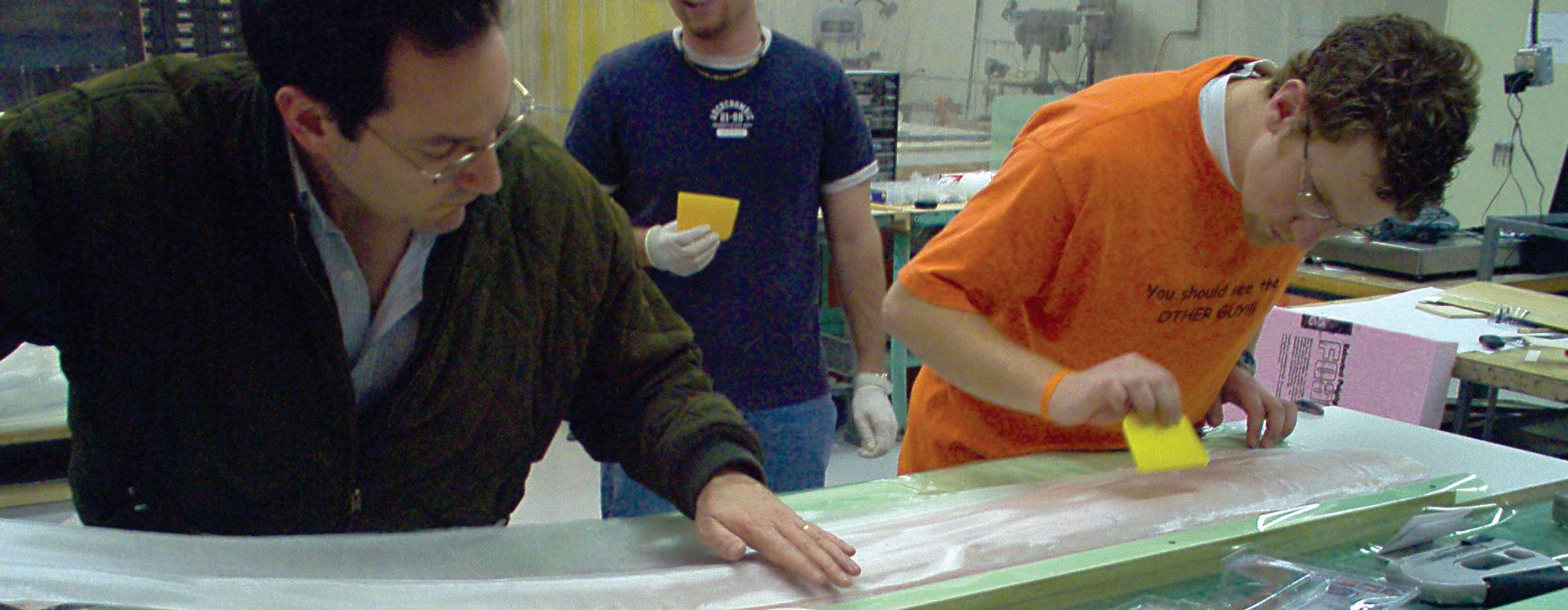
And they have to be good students to survive taking an airplane from concept to fully functioning in four months and then compete with the country’s brightest young engineers in the American Institute of Aeronautics and Astronautics International Design/Build/Fly Competition.
“It’s a high-pressure environment,” Arena says. “We’re trying to get students ready for careers in the industry. It’s structured like a company. They work in teams, have tight deadlines and reporting requirements. It’s competitive.”
He’s proud of how hard students work in the capstone course, acknowledging that it would be easy to give up. “They must overcome adversity. They may crash their planes, some teams multiple times, and have to go back and rebuild.
team were by far the most educational, challenging and character-building of my life,” says Sam Preece, who now works for Lockheed Martin Aeronautics. “The most difficult lessons were those dealing with leadership and interacting with individuals and groups on the team.
“The technical lessons help me in my current work, but the interpersonal lessons have affected every part of my life,” he says.
Matt Stutzman, design engineer at L-3 Communications Integrated Systems, says the class was the single best course in his college career. “The chance to see a job through from problem definition to conceptual design and all the way to fabrication, testing and refinement is great preparation for a job in any industry.”
“OSU graduates tend to be more successful than other graduates simply
that I’m out looking back on it and realizing that I somehow survived it,” says Nick Scocos, flight test engineer at Cessna Aircraft Company.
“When you’re forced to do 30 hours worth of work in 24 hours, you learn how to manage your time, prioritize, go without sleep and multi-task. That’s exactly what we do day in and day out in the engineering world,” he says.
15. That’s life. And that’s business.”
Ask Arena’s students why they are strong competitors, and they’ll tell you being a good student is only half the story.
“Students in the course are outstanding, but Dr. Arena creates an environment where students are given the chance to be outstanding,” Preece says. “He gives students complete
control of the project, and no matter what happens he has an infectiously positive attitude. He works the late nights and early mornings just like everyone else. It’s clear this is not his job. It’s his passion, and this passion is quickly spread to everyone involved in the project.”
Students in the capstone course do put forth enormous effort, but the hard work and enthusiasm is motivated by Arena’s passion for the competition, for his students and for OSU, according to Stutzman. “Dr. Arena is a great proponent for every aspect of the university. He used to tell us to leave the lab to go to basketball games, but he’d tell us he wanted us hoarse from yelling when we came back.”
Arena’s hope for the future is to continue graduating students who contribute to society and reflect well on OSU and the state of Oklahoma. “Everyone we put out there is a reflection of OSU,” he says.
EilEEn Mustain

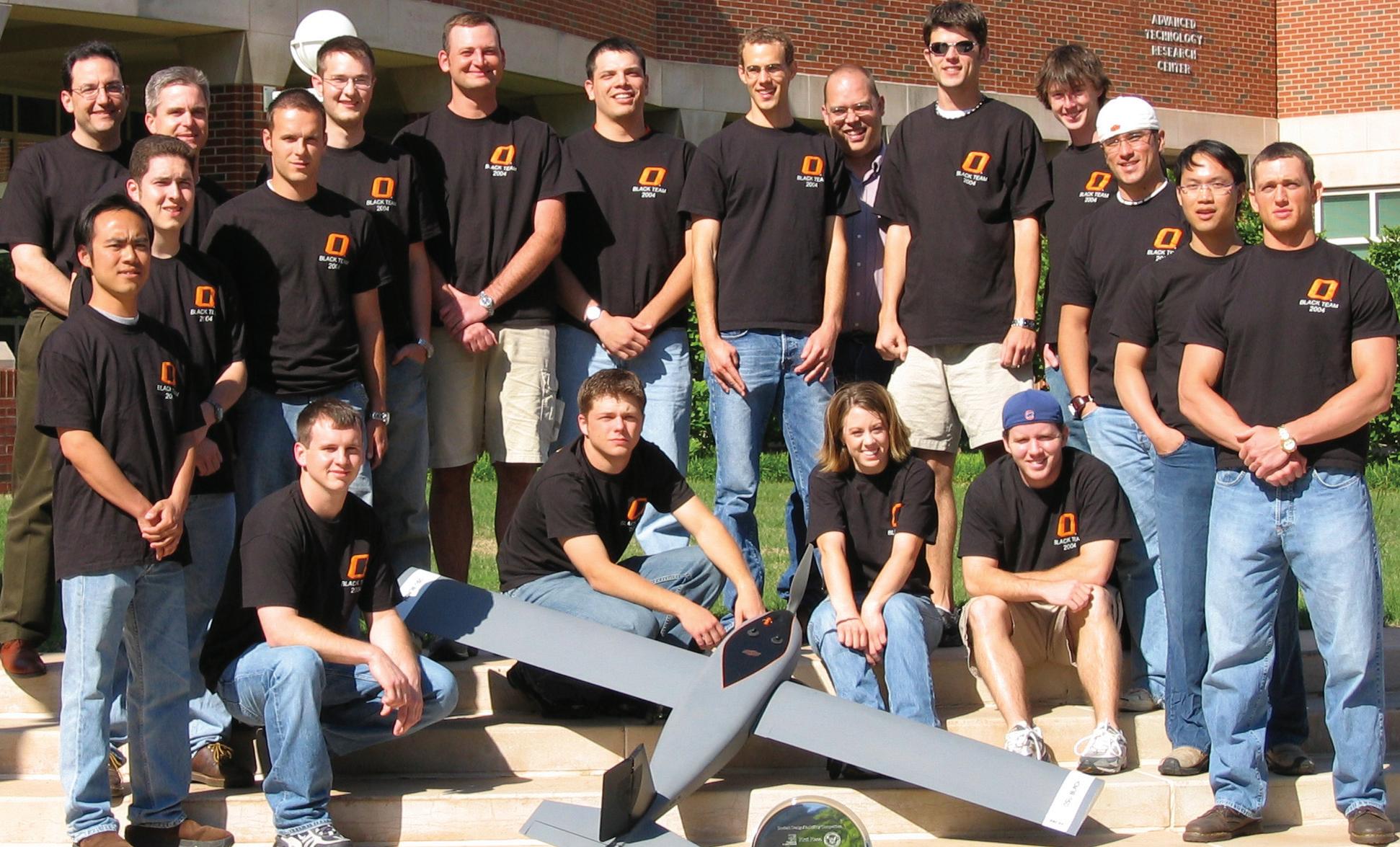 Robert Fischer courtesy
Robert Fischer courtesy
Robert Fischer 14 s OSU iMpACT
a ndy a rena
Winning Against the Best
The winner of the 2004 AIAA International Design/Build/Fly Competition was not the Massachusetts Institute of Technology, the Georgia Institute of Technology or the University of Southern California.
The top two teams in the competition sponsored by the American Institute of Aeronautics and Astronautics, Cessna and the Office of Naval Research were OSU-Black and OSU-Orange, teams from OSU’s School of Mechanical and Aerospace Engineering.
The competition requires students to design, fabricate and demonstrate the flight capabilities of an unmanned, electric-powered, radiocontrolled aircraft that can perform the specified mission. The objective in 2004 was to design a “fire bomber” aircraft that could carry and dump more than a gallon of water over a specified course.
With a flight time of 2 minutes and 56 seconds, the first-place OSU-Black team scored 170 total points, and the second-place OSU-Orange team scored 145 points. Comparatively, third-place finisher, the University of Illinois at Urbana-Champaign, scored 108 points.
Students built OSU’s entries as semester-long, team design projects in MAE 4374, the aerospace systems design course instructed by Andy Arena, mechanical and aerospace engineering professor.
Since 1997, the aerospace program has required all senior aerospace students to participate in the AIAA competition, and OSU students have performed well in the international contest, placing second in 1999; second and fi fth in 2000; fi rst and third in 2001; and fi fth and sixth in 2003.
The 2004 competition featured 37 teams from four countries.
adaM HuffEr
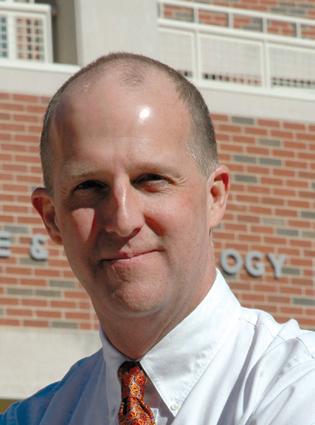
ECEN Welcomes New Head, New Funding
keith teague has been hooked on OSU ever since he taught his first class as a doctoral student in 1983.
Teague completed his bachelor’s and master’s degrees in electrical engineering at OSU and worked for the AMOCO Production Company Research Center as a research scientist in Tulsa before he received the teaching assignment that changed his life.
“I loved it,” he says.
After completing his doctorate, Teague became an assistant professor in 1984, interim head in 2002 and the head of the School of Electrical and Computer Engineering in June 2004.
“Before becoming interim head, I saw no redeeming value in this job,” he says. “I thought I wouldn’t have time for what I really enjoy doing teaching and research but I have a much different opinion now.” The past 15 years, in addition to teaching, Teague has been under contract with the Department of Defense for his research in secure mobile communications.
But like teaching, his job as department head has taken hold. “I enjoy working with people and helping faculty succeed. Helping a new faculty member land a first big contract or develop professionally is enormously fulfilling,” he says.
And, in terms of money generated, the school is doing very well.
“Research funding has more than doubled in the past three years, from $1.5 million in 2002 to $3.2 million in 2004.”
New Labs Create Opportunities
Over the past few years, OSU-Tulsa has added several new engineering labs, including a measurements and instrumentations lab in 2002, a materials science lab in 2003, a full-scale machine shop in 2004 and an experimental fluid dynamics lab in spring 2005.
Enrollment growth in mechanical and electrical engineering spurred the new development, but OSU-Tulsa has gone beyond meeting current needs. Its staged expansion also provides for future growth in OSU engineering programs, an aspect that pleases Larry Hoberock, head of the School of Mechanical and Aerospace Engineering.
“We can triple enrollment and still have space,” Hoberock says, noting the new labs make the programs more accessible. “Living expenses are the biggest cost of higher education in Oklahoma. For many students, saving money by living at home is the only way they can afford to attend college.”
Mechanical and electrical engineering students can complete their upper-level degree requirements on the Tulsa campus, but that was not always the case. “Until the measurements and materials labs were in place, students took their lecture-based courses at OSU-Tulsa and their key lab-based courses in Stillwater,” he says.
“A substantial number of our students live in the Tulsa metro area or northeastern Oklahoma,” says Ron Knight, engineering adviser and coordinator at OSU-Tulsa. “They
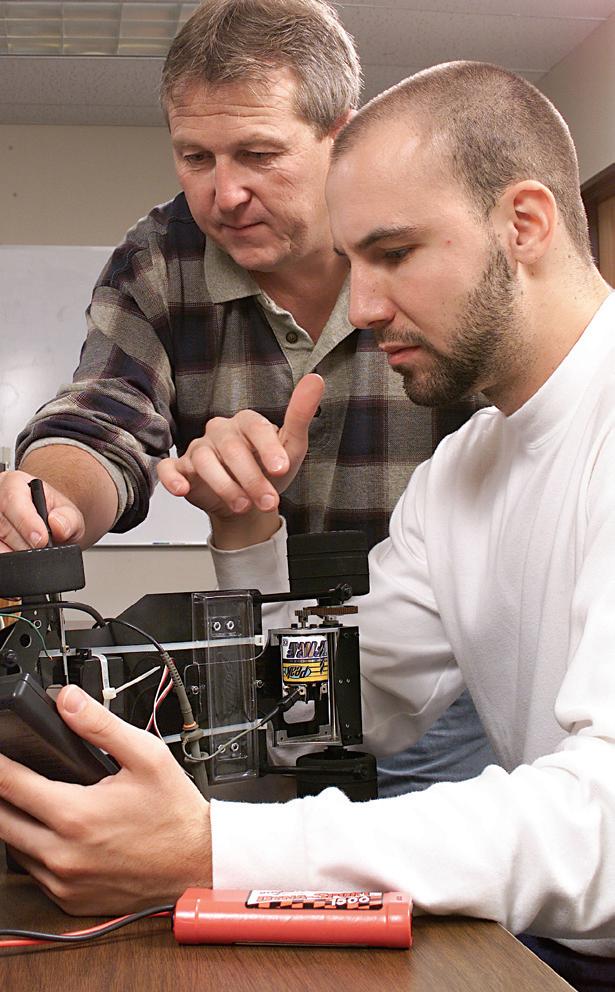
have full-time jobs and have or are starting families. Earning an OSU degree in Tulsa is convenient for their work and family situations.”
From fall 2001 to fall 2002, when the measurements lab opened, OSUTulsa experienced an approximate 125-percent increase in undergraduate engineering student enrollment (going from a total of 75 to 168 students).
“Since fall 2002, we have continued to see an annual increase in undergraduate engineering enrollment ranging from 2.3 percent to 5.4 percent,” Knight says.
“Mechanical engineering and electrical engineering continue to have our largest enrollment largely because students can complete their upper level-degree requirements on the OSU-Tulsa campus.”
Growth in the programs presents challenges for Hoberock and Keith Teague, head of the electrical engineering department. “We want our students to have the same experiences on both the Tulsa and Stillwater campuses,” Teague says, “and that leaves us in a race to bring Stillwater labs up to speed.”
Adding sufficient faculty to accommodate the growth is another challenge for both departments. Currently, most faculty travel between the two campuses. Hoberock, who hopes to add the resources to hire seven new faculty members, says the lack of lab space for faculty research has hampered locating faculty in Tulsa a problem that will be remedied when the new Advanced Technology Research Center comes online in 2006.
The center will provide facilities for graduate students and faculty research in materials used for the aerospace, biotechnology and telecommunications industries. “The new ATRC will be a catalyst that really starts the programs growing,” Teague says.
EilEEn Mustain
EilEEn Mustain
Erika Contreras
�004 s 1�
Scott Miller
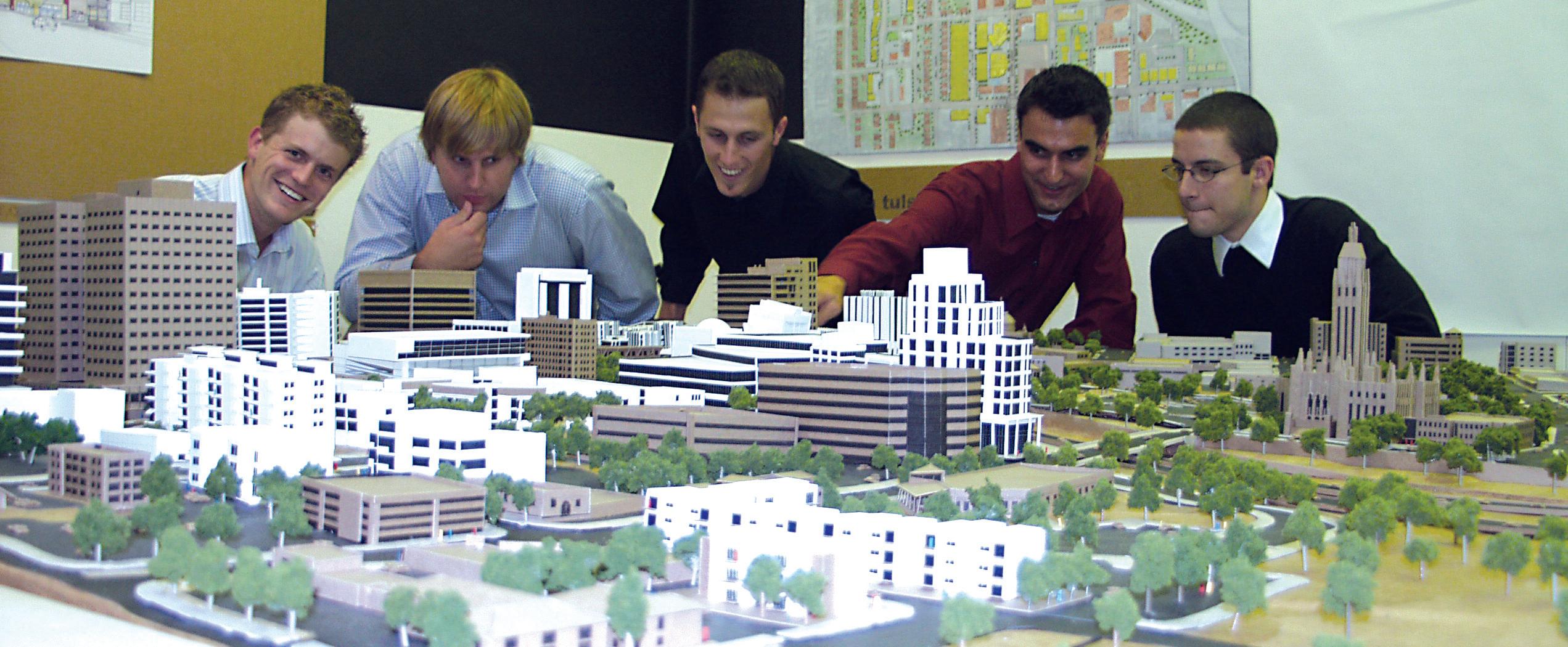
Architecture Course Rated Top in Nation

For the past 15 years, OSU School of Architecture students have won or placed in more national and international design contests than those from any other U.S. college or university. While the record alone affirms the school’s quality curriculum, its prestige grew even stronger in 2004 when it received the architectural profession’s highest endorsement.
The National Council of Architectural Registration Boards, architects who shape the professional registration requirements for the U.S. and its territories, presented the 2004 NCARB prize for the nation’s top course offering to OSU’s School of Architecture for creatively integrating practice and education in its capstone studio course.
The comprehensive one-semester class unites theories of design, technology and professional practice by integrating design studio with structural design, project management and issues of environmental performance and controls.
“They’re really looking for creative ways in which schools combine practice and education in a professionally oriented setting,” says Randy Seitsinger, professor and head of the School of Architecture. “Although NCARB has presented the award annually for just three years, this course is something we’ve been doing for 50 years.
“The NCARB prize is recognition that we offer the best course in the nation in terms of preparing graduates to be successful professionals,” he says.
Students in the capstone course work on individual projects, many in the developmental stage, allowing them to interact with real clients. Assignments in recent years
have included the Ponca City Airport, the Jazz Hall of Fame in Tulsa, the OSU Alumni Center and the OSU Foundation building and the office complex for the Gaillardia development in Oklahoma City.
The projects include drawings, models and computer-graphic representations that progress through the stages of schematic conceptualization, design development and construction drawings.
Throughout the semester, students interact with juries pooled from up to 50 practitioners, including architects, mechanical engineers, structural engineers and code officials who visit campus periodically and evaluate the projects at the end of the course.
“The jurors, who tend to be alumni and professionals who’ve hired our graduates, share in the process,” Seitsinger says. “We can’t really emulate or talk about professional practice without participation from and interaction with people out there doing it.”
Faculty members who worked on the submission for the NCARB prize included course coordinator Suzanne Bilbeisi, Jeanne Homer, Tom Spector, John Phillips and Khaled Mansy. Seitsinger also recognized the contributions of emeritus professor Alan Brunken who, until 2003, had coordinated the course for more than 20 years.
As thrilling as the $25,000 prize, was the question posed to associate professor and course coordinator, Suzanne Bilbeisi, at the end of her acceptance speech. “When I finished talking about our senior design studio,” she says, “a former NCARB president put up his hand and asked, ‘How do we hire OSU graduates?’”
adaM HuffEr
1� s OSU iMpACT
photos/Erika Contreras

Architecture Professor Tabbed Nation’s Best
In addition to the nation’s top course offering, the OSU School of Architecture also boasts America’s best architecture teacher, according to a 6,000member national student organization.
MohaMMed bilbeisi, associate professor of architecture, has been named the 2004 National Educator Honor Award winner by the American Institute of Architecture Students.
Bilbeisi, or “Moh,” as he is known throughout the School of Architecture, completed his bachelor’s and master’s degrees in architecture at OSU, worked in industry and taught two years at the University of Oklahoma before returning to OSU in 1998.
While teaching at OU, he won the university’s outstanding professor award and, as faculty sponsor of AIAS, saw its students earn the national organization’s recognition as the top chapter in the country. Back at his alma mater, Bilbeisi immediately became adviser to OSU’s AIAS chapter.
“With surges of energy from Moh and newly elected officers, our chapter realized its team goals of working toward excellence and service,” says Randy Seitsinger, professor and head of the School of Architecture.
“The chapter today has increased its membership 300 percent, publishes a newsletter and organizes many different events such as game-day cookouts, golf tournaments, sculpture competitions, gallery shows, workshops and design lectures, a public school art/architecture program and an annual job fair.”
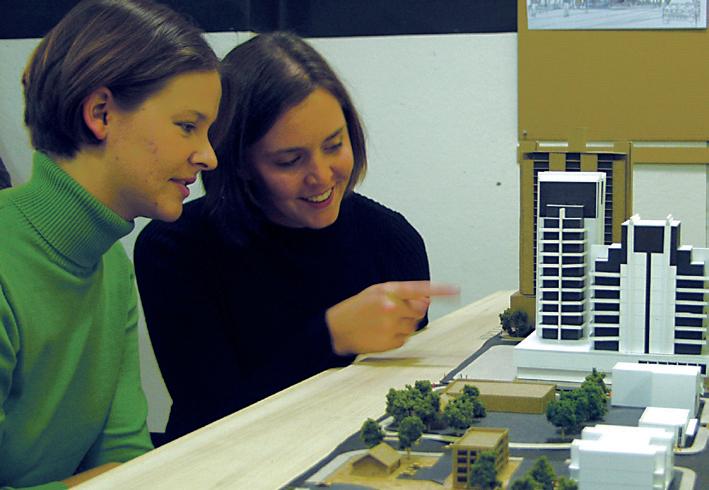
In 2000, OSU’s chapter won a national AIAS Special Accomplishment Honor for its creation and coordination of Architecture Students Teaching Elementary Kids (ASTEK), a community outreach program that teaches Stillwater’s fifth-graders the fundamental concepts of architectural design.
And in 2002, competing with 130 chapters nationwide, OSU’s chapter received the national AIAS Chapter Honor Award to become the nation’s top chapter.
In addition to advising AIAS, Bilbeisi has mentored more than 30 OSU students to wins or placements in separate state, national and international design competitions. Bilbeisi’s effectiveness as an educator, according to Drew Parli, president of OSU’s AIAS chapter, is his insistence on treating students as equals and maintaining an open line of communication with students.
Bilbeisi says he is fortunate to work in a profession he loves and gives credit for the AIAS National Educator Honor Award to his students. “It’s such an honor just to be nominated, but I also had to submit for judging consideration the works of my students, so the award is reflective of their achievements.”
adaM HuffEr

FEMA Funds Fire Safety Initiatives
The Federal Emergency Management Agency is funding OSU’s development of two new public fire safety programs for the most at-risk segments of the population.
The $699,600 grant supports Fire Safety Solutions for People with Disabilities and Fire Safety Curriculums for Young Children 3 to 5 years old, separate initiatives created by OSU Fire Protection Publications.
The grants, part of the Assistance to Firefighters Grant program, are given to fire departments and other national, state, local and community organizations recognized specifically for their fire prevention and safety outreach experience and expertise.
OSU Fire Protection Publications, headquarters for the International Fire Service Training Association, is the largest provider of firefighter training materials and curriculums to all 50 states, U.S. territories and the Department of Defense.
photos/Erika Contreras
Richard Glazier
�004 s 1�
OSU in Combat
In a manner of speaking, U.S. soldiers don’t pick a round without OSU’s advice.
The College of Engineering, Architecture and Technology has helped the U.S. military choose its non-nuclear weaponry in combat situations for more than 30 years and will continue that support for the next five years.
In 2004, the U.S. Department of Defense renewed its contract with OSU, approximately $25 million, to continue the production of the Joint Munitions Effectiveness Manuals (JMEMs) used by all branches of the U.S. military.
The five-year contract funds field offices at Eglin Air Force Base, Fla., and Aberdeen Proving Grounds, Md., where CEAT engineers research and analyze data for the effectiveness of surface-to-surface, air-to-air, ground-to-air and air-to-surface weapons.
JMEMs, which require continual updating, provide information on mission planning, weapon characteristics, damage assessments, accuracy of delivery, weapon penetration and kill probability for various target types and environments as well as photographs, graphics, tables on U.S. and foreign systems, weapons and munitions effectiveness simulations.
Among those relying on JMEMs are operation commanders, weapon system designers, logisticians, combat pilots, weaponeers and trainers who use the information to prepare soldiers for battle.
“Our products were used in Desert Storm, Afghanistan and Iraq — in most all military operations for the past 30 years,” says Arthur Rosenbaum, program director.
“The defense contract is the single largest in the history of the college, acknowledging the major role OSU plays in the nation’s defense and the safety of our troops,” says Karl Reid, dean of CEAT.
EilEEn Mustain
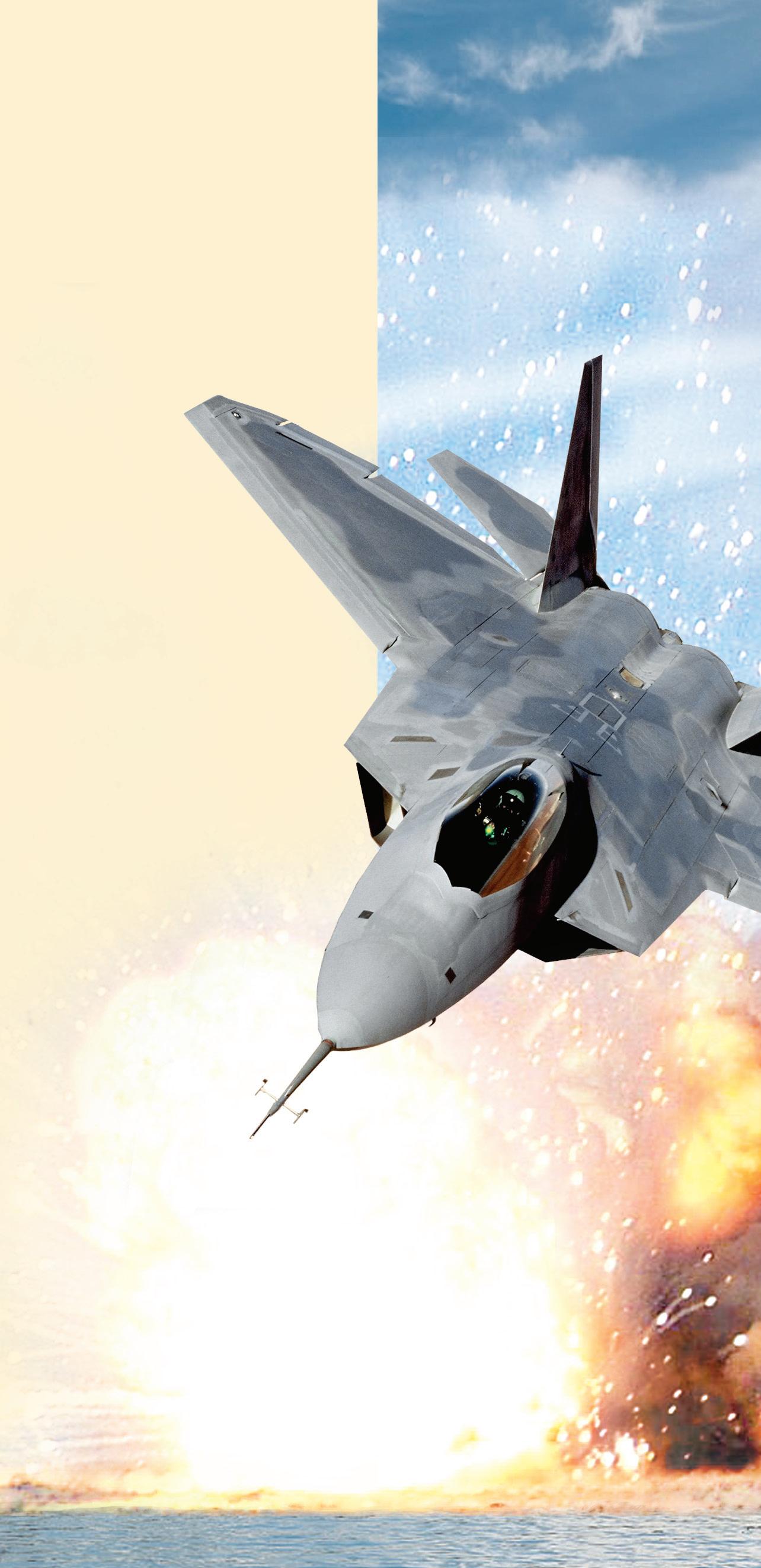
Making the Grade
Faculty in the College of Engineering, Architecture and Technology formed committees in 1998 and rolled up their sleeves.
They undertook a comprehensive self-study of all CEAT engineering programs using the educational criteria set forth by the Engineering Accreditation Commission of the Accreditation Board for Engineering and Technology.
Their task required defining the educational objectives and outcomes for each program, specifying what educational experiences can help students achieve the objectives and determining how to assess graduates against those outcomes.
The intensive five-year effort resulted in CEAT programs receiving a positive appraisal from EAC/ABET in 2004.
Karl Reid, dean of the college, says he is pleased but not surprised CEAT received accreditation. “Through an enormous effort in terms of time and energy on the part of faculty, department heads and associate deans, we were superbly prepared,” he says.
The process changed substantially with ABET’s adoption of Engineering Criteria 2000, Reid says, accounting for the lengthy preparation time. “There is a totally new set of criteria and a new philosophy.”
EC2000 criteria includes an assessment process that measures and documents outcomes and the degree to which they are achieved. ABET describes EC2000 as a shift in focus from what is taught to what is learned.
“Assessment is the major new component,” Reid says. “We did a lot of bean counting and filling in the boxes under the old scheme. We’ve never before been held accountable for defining program outcomes and the process to measure them.
“In the past, we relied on tests to assess student performance. Now we have a well-designed, multi-dimensional assessment that evaluates students’ abilities relative to the educational outcomes as well as the abilities of graduates relative to the educational objectives,” he says.
“Defining and assessing programs can’t be done at the last minute. We had to do this over time in order to demonstrate how we have used the assessment process to improve,” Reid says, noting a continuous improvement process is embedded in the criteria. “We’ll continue to use assessment data to identify opportunities for improvement, including new assessment processes.
“EAC/ABET accreditation demonstrates the high quality of our programs,” he says. “Our constituents can be very pleased that our programs continue to move to a higher level each year and our graduates continue to be competitive with the best.”
EilEEn Mustain
1� s OSU iMpACT
Transportation Center Draws National Attention
OSU and the University of Oklahoma, with input from Oklahoma Department of Transportation administrators and industry representatives, launched the Oklahoma Transportation Center in 2000 to concentrate research efforts and resources. The collaboration, which now
includes Langston University, has moved Oklahoma to the national forefront of transportation research.
The center received $350,000 in federal transportation funding in 2003, another $3.5 million in 2004 and $5.8 million for 2005. Of
the 2005 funding, $4 million is allocated for transit study and $1.5 is set aside for highway research.
“The funding for 2004 was also split, $1.5 million for highways and $2 million for transit,” says Gorman Gilbert, co-director of the

Glass Trucking Co. Inc. owner and operator Ike Glass, an OSU alumnus, serves as chairman of the Oklahoma Transportation Center’s policy board, a group of industry representatives that helped launch the center and shape its mission. Glass’s flour transports, such as the one pictured here, steadily supply food producers throughout Oklahoma and the region, from Texas to Indiana.
The 2005 funding for the Oklahoma Transportation Center includes $300,000 for the construction of OSU’s Structures Engineering Lab, which will allow OSU researchers to work on large projects such as the testing and development of new bridge beam construction technologies.
center and professor and head of OSU’s School of Civil and Environmental Engineering. “We don’t have extensive transit in this state, so to determine how best to use the 2004 funding, we went to the Federal Transit Authority and asked them to help us.
“It’s kind of ironic because most of us in the academic world are used to going to Washington with ideas looking for money, and we went with money looking for ideas,” Gilbert says.
Federal Transit Authority officials outlined six different transit projects for the OTC to pursue over the next several years, including a Tulsa-based study that will serve as a national model for improving coordination between federally-funded van and shuttle services for the aged.
The center will also develop the FTA’s strategic plan and refine FTA selection criteria for cities to receive rail startup funding.
“Rail startups are somewhat controversial because many cities
want to build new rail systems and others need to expand, and there isn’t enough money for all of them,” Gilbert says. “The FTA is looking to us to develop a process that it can use to filter applications and decide where it wants to invest these major startup monies.”
The center’s highway research remains focused in-state, particularly on the management of infrastructure and its construction. The center apportioned funding among 14 separate projects last year.
“We accept proposals from researchers at each of the participating schools,” he says. “The selection committee, which includes representatives from all three schools, selects the ones to fund based on size, scope and relevance to the needs of ODOT and the Oklahoma Transportation Authority.
“This is a really unique, cooperative effort between the universities, and I think the state will begin to see more and more benefits from it,” Gilbert says.
“One of the highway projects involves establishing models for freight flows in and out of the state, planning tools that will become very useful to our state policy makers.”
The Oklahoma Transportation Center is vital to the state, according to Ike Glass, owner and operator of Glass Trucking Co. Inc. in Newkirk and chairman of the center’s policy board that helped shape its mission.
OSU, OU and Langston’s collaboration is what people in the private sector want to see, Glass says. “Taxpayers don’t really care what school or department is doing what so long as Oklahoma receives the benefits.
“The Oklahoma Transportation Center is a great example of what higher education can do for the state,” he says. “The federal government has monitored its progress, recognized its significance and seen that it is a very important thing not only to Oklahoma but the entire nation.”
adaM HuffEr

�004 s 1�
Erika Contreras
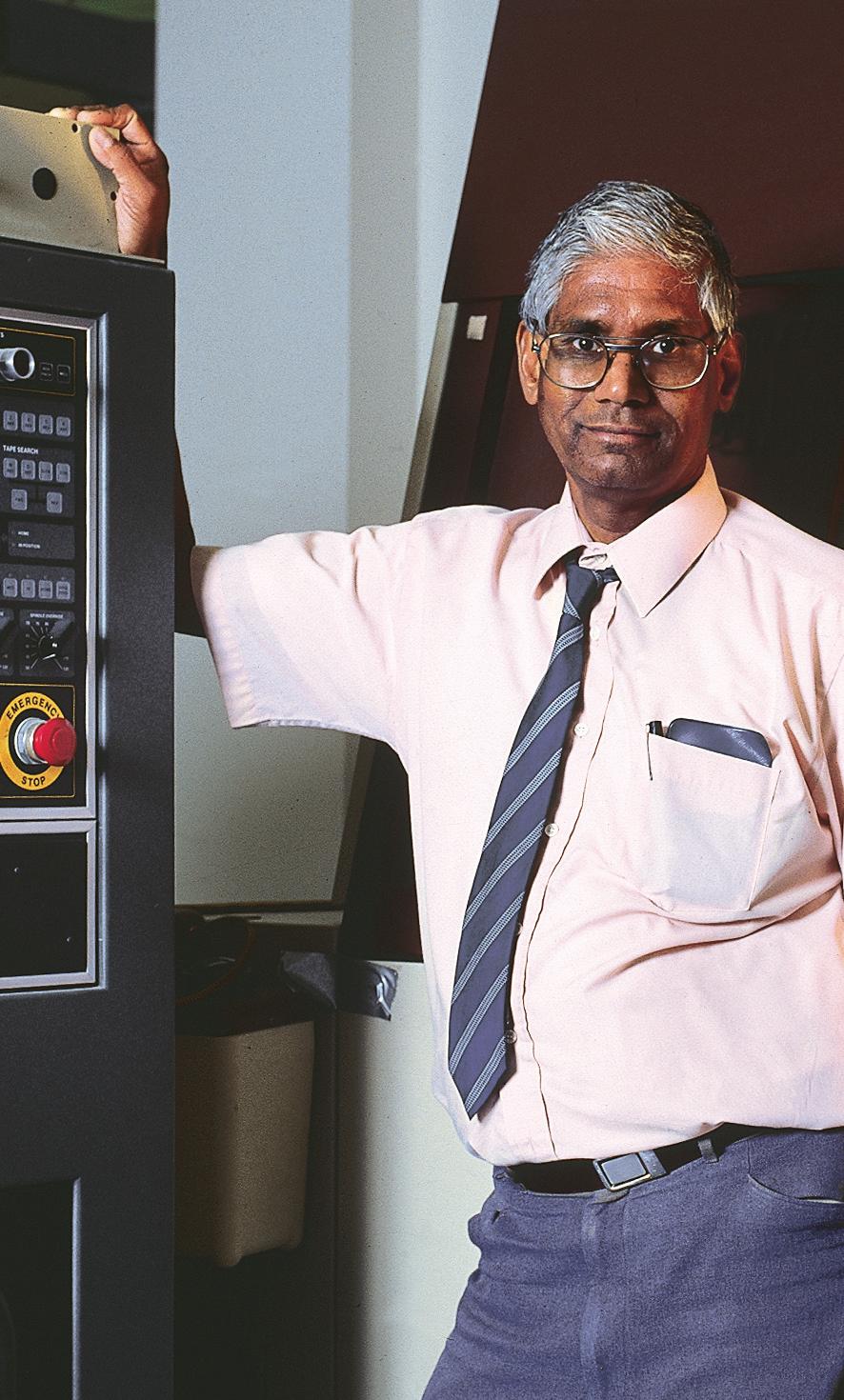
Top Honors for Komanduri
ranga koManduri, Regents professor and the Albert H. Nelson Jr. Chair in the School of Mechanical and Aerospace Engineering, received OSU’s 2004 Eminent Faculty Award, the highest level of scholarly achievement.
OSU honors one faculty member each year for outstanding accomplishments in scholarly-creative activity, teaching and service and bringing honor and recognition to the university. The intent is to honor OSU’s best faculty members.
“Dr. Komanduri holds a distinguished record of past and continuing excellence and prominence at both national and international areas of expertise, which are manufacturing; high-speed machining; ultra-precision machining, grinding and finishing of ceramic surfaces,” OSU System CEO and President David Schmidly says.
Other areas of research include molecular dynamics simulations of machining, thermal aspects of various manufacturing processes, diamond coatings and multiple nanocoatings for wear resistance of cutting tools and wear parts, and carbon nanotubes.
Komanduri also received another honor in 2004. He was appointed distinguished honorary professor in mechanical engineering for a two-year period at the India Institute of Technology in Kanpur, India, one of the most prestigious universities in the world. This is an extremely rare recognition.
adaM HuffEr
Case Recognized for Career Achievements
The American Society for Quality awarded kenneth Case the Eugene L. Grant Medal in 2004 for outstanding leadership in the development and presentation of meritorious educational programs in quality.
The world’s leading authority on quality, ASQ is a 104,000-member professional association that advances learning, quality improvement and knowledge exchange to improve business results and to create better workplaces and communities worldwide.
The medal, named for industrial engineering pioneer Eugene L. Grant and given annually, is one of many honors bestowed on the Regents professor of industrial engineering and management and the current president of ASQ.
Case has been recognized repeatedly as a foremost expert in his field by the world’s leading professional engineering organizations.
He is a board member of the International Academy for Quality, an elite international think-tank composed of only 75 hand-selected academicians and quality experts worldwide that recognized Case with its President’s Award in 1999; he is also one of just 13 Oklahomans inducted into the National Academy of Engineering, the greatest professional distinction an engineer can achieve.
In addition to once serving as president of the Institute of Industrial Engineers, he received the Frank and Lillian Gilbreth Industrial Engineering Award, IIE’s highest honor.
The ASQ is a founding partner of the American Customer Satisfaction Index (ACSI) and also administers the U.S. Commerce Department’s Malcolm Baldrige National Quality Award, which is the highest level of national recognition for quality achievement that a U.S. firm, healthcare provider, educational institution or non-profit organization can receive.
adaM HuffEr

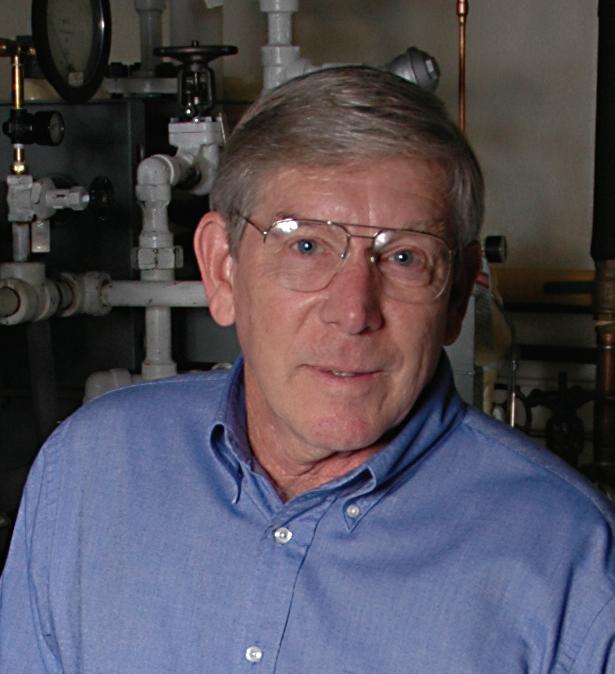
Wagner Honored for Teaching
Jan Wagner, professor in the School of Chemical Engineering, received OSU’s 2004 Regents Distinguished Teaching Award for the College of Engineering, Architecture, and Technology. The award, given to the top teachers in each college, recognizes sustained excellence, dedication and innovation in teaching.
The honor came as no surprise to his students. Wagner, who co-teaches the school’s capstone course, has been honored by the chemical engineering honor society as the school’s outstanding teacher for four of the past five years.
“Former students report that his high expectations for personal accountability and performance turned out to be one of their most valuable experiences at OSU,” says Rob Whiteley, associate professor of chemical engineering and colleague who has co-instructed the senior design course with Wagner since 1991.
“Jan converts seniors from students at the beginning of the fall semester to engineers at the end of the spring term,” Whiteley says.
dottiE WittEr and adaM HuffEr avdhesh t yagi, director of Oklahoma Infrastructure Consortium and a faculty member in civil and environmental engineering, received the 2004 Outstanding Engineer Award from the Oklahoma Society of Professional Engineers.
Tyagi Named Outstanding
During the organization’s annual meeting, Tyagi was also installed as president. In addition, he was presented with a Fellow Award of the National Society of Professional Engineers.
Tyagi is a fellow of the American Society of Civil Engineers. He has taught at the Universities of Arizona and Kansas and is a registered professional engineer in Oklahoma and Arizona. He has more than 30 years experience in the water resources and environment areas.
Contreras Heath Shelton Noteworthy �0 s OSU iMpACT
courtesy Erika

Kamath Honored for Advisement
ManJunath kaMath, professor and director of the graduate program for the School of Industrial Engineering and Management, received the OSU 2004 Outstanding Adviser Award for the College of Engineering, Architecture and Technology.
Kamath, who joined the OSU faculty in 1989, is also director of the Center for Computer Integrated Manufacturing Enterprises and associate director of the Center for Engineering Logistics and Distribution, a multi-university industry and university cooperative research center sponsored by the National Science Foundation.
Over the last decade NSF has funded five projects in which he has served as principal investigator or co-principal investigator. These include the development of a comprehensive object-oriented modeling environment for manufacturing systems, a queuing network solver package called RAQS (Rapid Analysis of Queuing Systems) and an integrated production management systems framework.
He has also developed and taught two new graduate-level courses in manufacturing enterprise modeling and real-time control of manufacturing systems. Industrial engineering and management students have twice named him outstanding faculty member.
EilEEn Mustain


Noyes Honored for International Contributions
ronald t. noyes, professor emeritus in biosystems and agricultural engineering, received the 2004 Kishida International Award given for outstanding contributions to education, research, development, consultation or technology transfer outside the U.S.
Noyes, who retired in early 2004 as professor and extension agricultural engineer, received the Kishida Award for his work in the optimal storage and handling of grain and other agricultural products.
During his career Noyes received six U.S. patents, traveled to 15 countries to work on engineering aspects of grain storage and management and is considered an international authority on grain aeration and recirculation fumigation technology. He holds bachelor’s and master’s degrees in agricultural engineering from OSU and a doctorate in higher education from the University of Oklahoma.
Before joining the OSU faculty in 1985, Noyes worked as an extension agricultural engineer at Purdue University and as chief engineer and vice president of engineering for Beard Industries.
Erin Harris and CourtnEy England
Grischkowsky Honored for Research
daniel r grisChkoWsky, Bellmon chair and Regents professor in the School of Electrical and Computer Engineering, received the 2004 Regents Distinguished Research Award in recognition of his outstanding research and continued research excellence in the field of ultrafast optoelectronics.
National funding agencies have awarded Grischkowsky 26 research contracts, totaling more than $4.6 million, during his 10-year tenure at OSU. He has published more than 110 refereed journal articles in his career, including approximately 40 since joining OSU.
Grischkowsky’s accomplishments in terahertz research have provided the basis for much of the work on which the Rensselaer Center for THz Research is focused, according to Shirley Ann Jackson, president of Rensselaer Polytechnic Institute.
“Rensselaer would not be in a position to celebrate its achievements in THz research without Professor Grischkowsky’s ground-breaking and ongoing contributions,” Jackson says.
Jana sMitH and dottiE WittEr
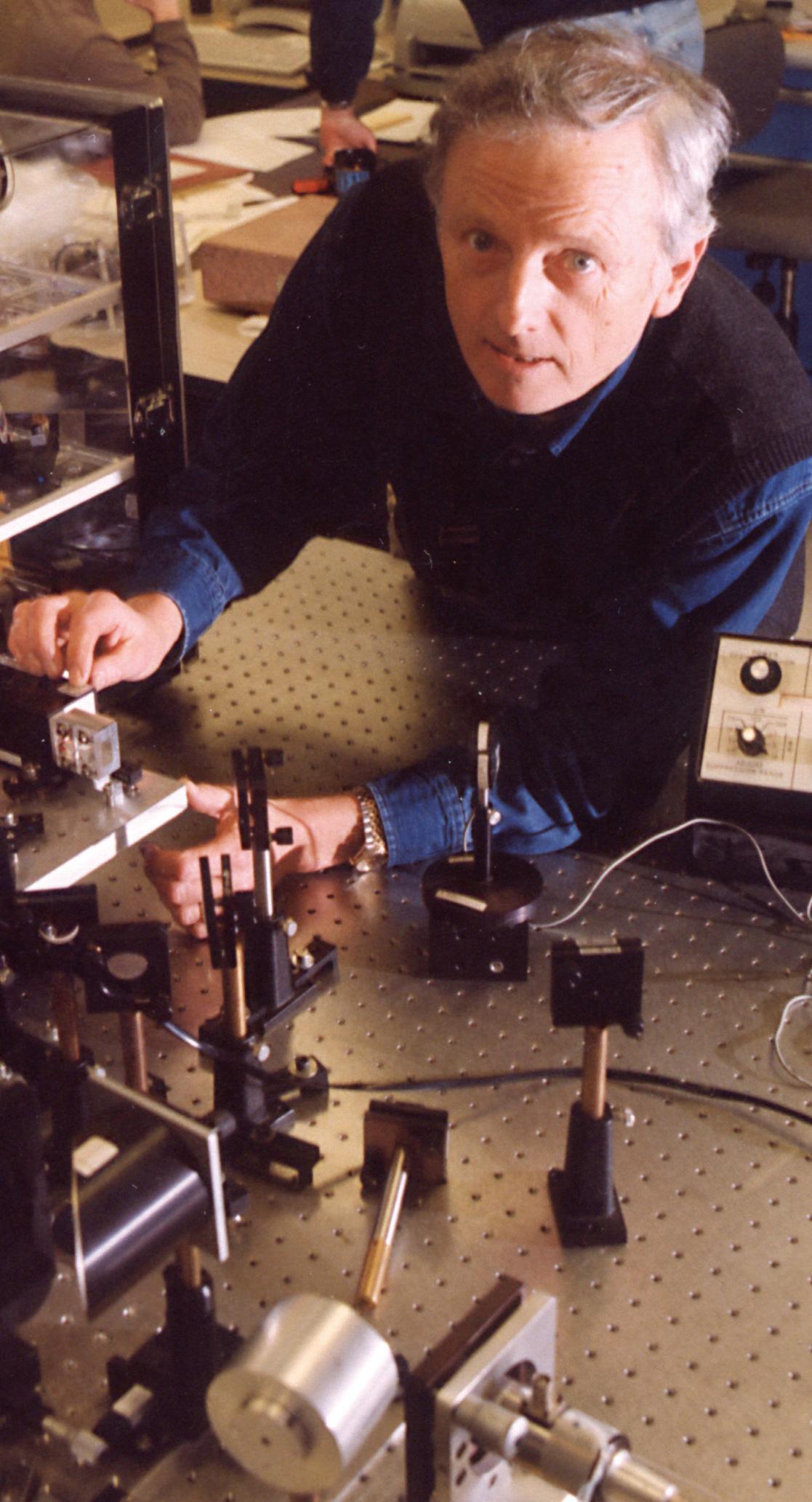 Outstanding Engineer
Outstanding Engineer
Huffer
Adam
Todd Johnson
avdhesh tyag I �004 s �1
Ken Helt Photography


Fan, Fierro Receive CAREER Awards
guoliang Fan and raFael Fierro in the School of Electrical and Computer Engineering received NSF Faculty Early Career Development (CAREER) Awards in 2004. The National Science Foundation’s most prestigious, competitive awards program for up-and-coming faculty members provides five years of sustained funding for research program and professional development and outreach.
Fan’s research aims to develop a comprehensive structured video representation via advanced statistical modeling approaches. The goal is to enhance interpretability and manipulability of visual data, leading to effective visual communications and innovative multimedia applications.
This research addresses fundamental issues in visual information processing with widespread applications in diverse areas, including multimedia, digital library, security surveillance, entertainment, biomedical imaging and human-computer interface, among others.
The proposed research will also make significant contributions to industry multimedia standards (MPEG-7). His research program will be integrated into the educational plan to build a research-oriented multidisciplinary educational environment for both undergraduate and graduate students, especially minority and underrepresented students.
Fierro’s research focuses on developing the algorithms to enable autonomous robots to carry out difficult and dangerous missions. The project aims to develop methods to facilitate the design of dynamic networks of interacting systems.
There are many applications where a dynamic network may be more suitable than a single vehicle, especially where a distributed system of sensors is advantageous. Looking for explosives in Iraq is an example, Fierro says.
“Suppose that instead of sending soldiers to a dangerous field, we could send small intelligent mobile robots equipped with sensors and communication capabilities. These robots could communicate with each other and cooperate in order to efficiently explore the area.”
Other potential uses include search and rescue operations, disaster relief operations, multi-targeting/ multi-platform battlefield groups, unmanned air vehicle systems, intelligent highway/vehicle systems, wireless surveillance networks and space exploration.
This research will be integrated into curriculum development designed to provide research opportunities for undergraduate students with emphasis on attracting and retaining underrepresented minorities.
EilEEn Mustain
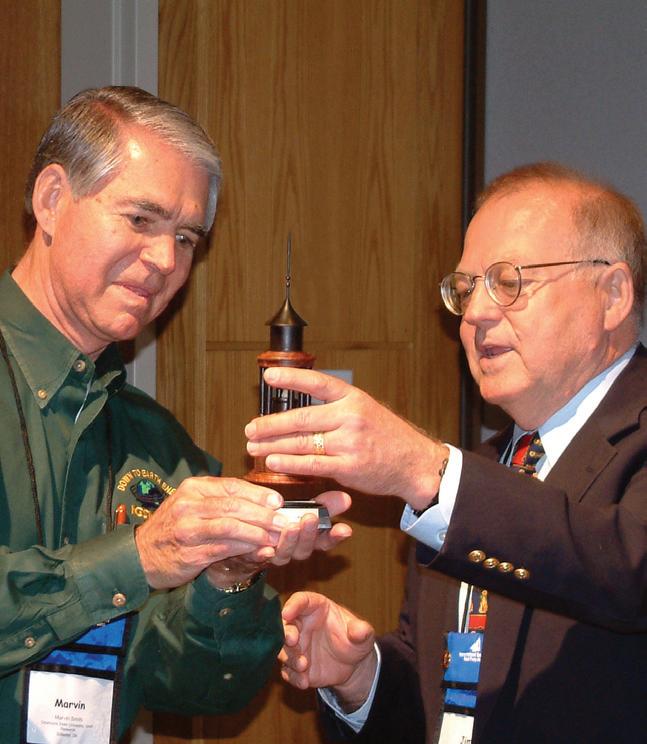
ers and horizontally trenched 2-pass, 4-pass and Slinky heat exchangers.
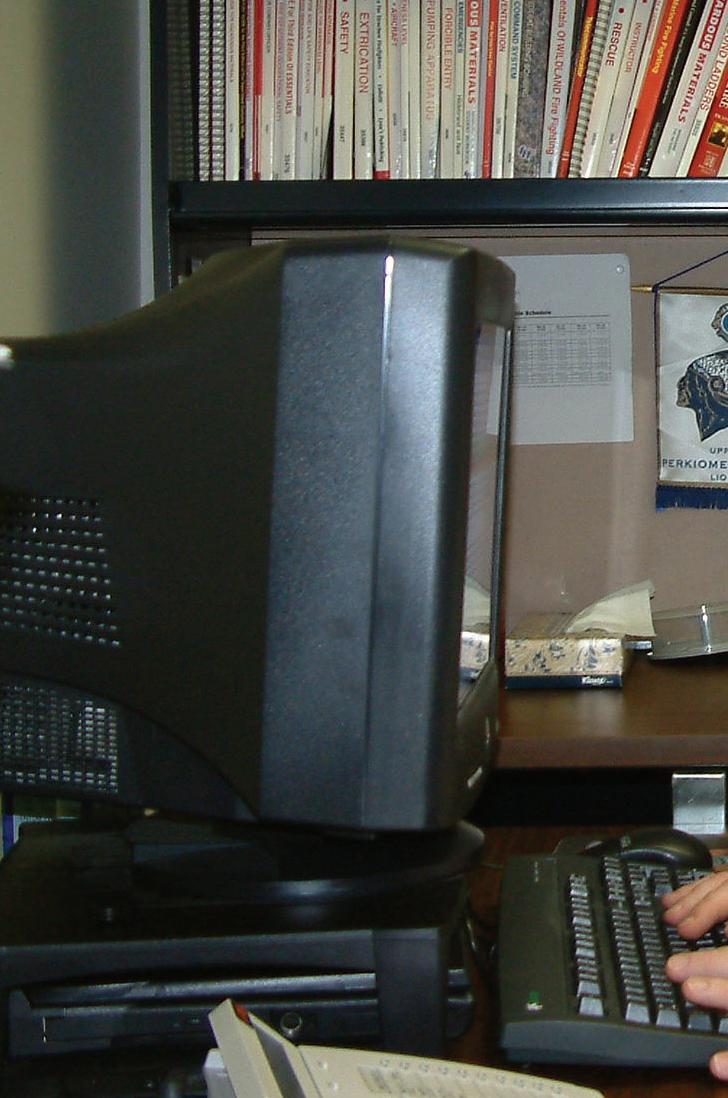 Jim Bose, director of the CEAT Division of Technology, right, presents a lifetime achievement award to Marvin Smith, emeritus professor in engineering technology, registered professional engineer and patent holder. Smith, who retired in June 2004, served as department head for 20 years before spending another decade directing geothermal heat pump research at OSU. His projects include development of the Slinky heat exchanger, performance evaluation of vertical and horizontal borehole heat exchang-
Adam Huffer
photos/Erika Contreras
Jim Bose, director of the CEAT Division of Technology, right, presents a lifetime achievement award to Marvin Smith, emeritus professor in engineering technology, registered professional engineer and patent holder. Smith, who retired in June 2004, served as department head for 20 years before spending another decade directing geothermal heat pump research at OSU. His projects include development of the Slinky heat exchanger, performance evaluation of vertical and horizontal borehole heat exchang-
Adam Huffer
photos/Erika Contreras
�� s OSU iMpACT
Adam Huffer
Spitler Named ASHRAE Fellow
JeFFrey spitler, the C.M. Leonard professor in the School of Mechanical and Aerospace Engineering, attained the grade of fellow in the American Society of Heating, Refrigeration and Air-Conditioning for his research contributions to the heating, refrigeration, air conditioning and ventilation sciences.
Spitler’s research interests include building energy analysis and load calculations, thermal systems simulation and design, ground source heat pumps and heating, ventilating, and air conditioning analysis and design.
He is a member of the American Society of Mechanical Engineers, president of the International Building Performance Simulation Association, associate editor of the International Journal of Heating, Ventilating, Air-Conditioning and Refrigerating Research, a member of the International Advisory Board, Building Services Engineering Research and Technology, and a member of the editorial board for the journal Geothermics.
He received an ASHRAE technical paper award in 2003 and the Napier-Shaw Bronze Medal from the Chartered Institution of Building Services Engineers for a paper in building services engineering research and technology in 2000.
Spitler is a member of OSU’s Building and Thermal Systems Research Group and coordinator and manager for the Smart Bridge project, a multidisciplinary collaboration between OSU and the University of Oklahoma to develop a geothermal heating system to prevent icing on bridges.
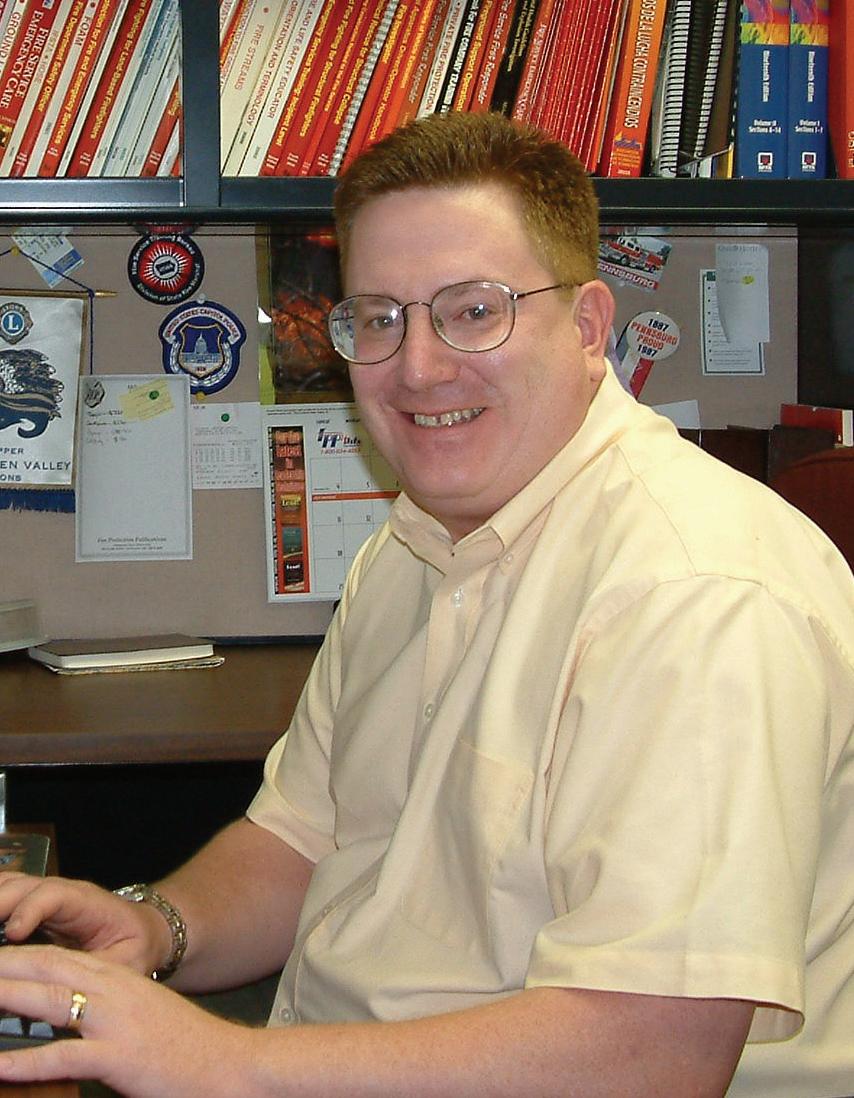
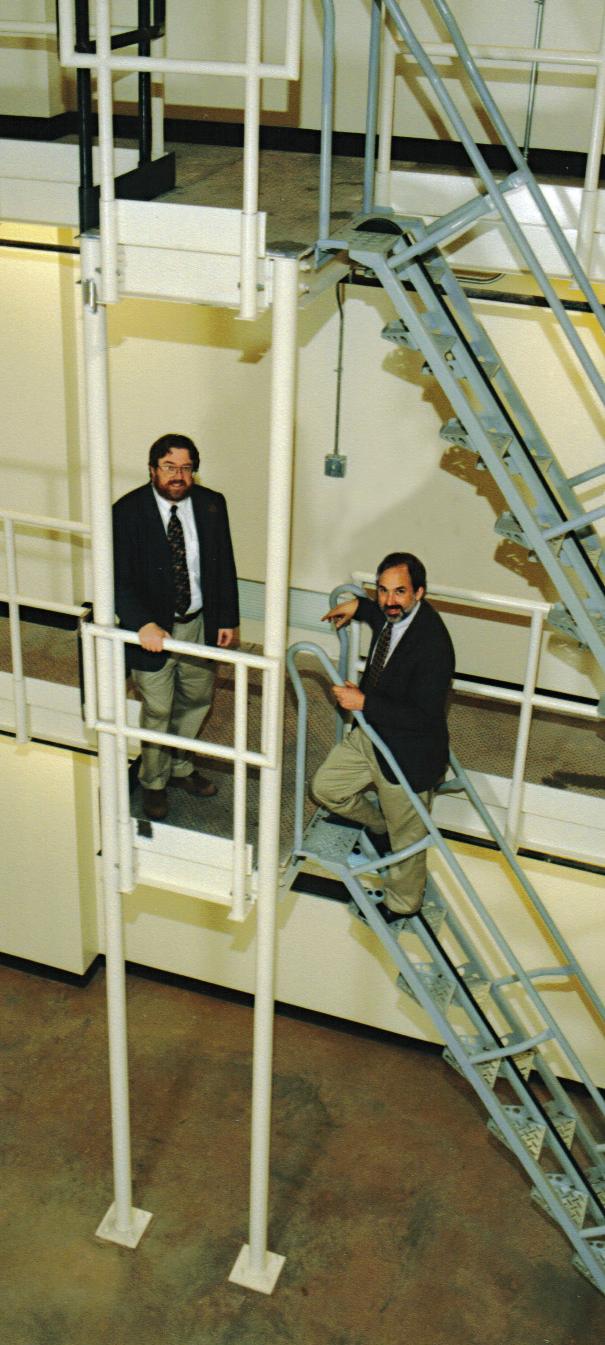
Fisher Receives National Award
daniel Fisher received the Engineering Society for Advancing Mobility in Land, Sea, Air and Space 2004 Ralph R. Teetor Educational Award identifying him as one of eight top young engineering educators in the nation. SAE gives the award annually to recognize outstanding faculty who have three to 10 years of experience.
Fisher’s research interests are in the areas of energy conversion and thermal systems design. Since he joined OSU in 1999, the associate professor in the School of Mechanical and Aerospace Engineering and member of the school’s Building and Environmental Thermal Systems group has further established the university as the worldwide leader in the advancement of geothermal heat pump applications.
Working with collaborators from the University of Illinois, Lawrence Berkeley National Laboratory and four other research groups, Fisher represented OSU on the national research team that developed EnergyPlus, the Department of Energy’s new standard in simulation software that R&D Magazine cited among the most groundbreaking technological achievements of 2003.
Also a dedicated teacher, Fisher is faculty adviser to the student branch of the American Society of Heating, Refrigerating and Air-Conditioning Engineers and OSU’s Formula SAE Racing Team, which designs and builds a scale-sized, openwheeled racecar powered by a motorcycle engine for the annual Formula SAE student competition in Pontiac, Mich.
EilEEn Mustain
For his accomplishments and achievements, Mike Wieder, assistant director and manager of OSU Fire Protection Publications, received in 2004 the International Society of Fire Service Instructors’ 2003 George D. Post Instructor of the Year Award.
Wieder, a well-known speaker at fire service conferences and seminars, was also selected to chair the national committee that will develop professional standards for first responders working within the National Incident Management System adopted by the Department of Homeland Security.
The committee Wieder chairs will outline the professional qualifications required of individuals in incident command leadership roles and develop standards for training and certification programs that will prepare personnel to lead incident command.
Wieder, a 20-year employee of OSU and graduate of the School of Fire Protection and Safety Technology, has researched and penned approximately 30 textbooks and more than 100 technical articles.
adaM HuffEr
�004 s ��
Wieder Designated Top Instructor, National Chair
EilEEn Mustain Helt Photography
Ken
Mechanical and aerospace engineering faculty Jeffrey Spitler, left, and Daniel Fisher, right, are in the world’s first laboratory model of a multi-story air-handling system that allows the researchers to study how contaminants, such as bioterrorism agents, move through ventilation systems.
organizational and procedural hierarchy, particularly if an event requires hundreds or thousands of them to answer the call.
NIMS, based on the protocols of incident command structures used by the fire service for 30 years, will require all responders to work within a common




Solie, Stone Are Men of Distinction
John solie and Marvin s tone, professors in biosystems and agricultural engineering, were recognized as fellows in the American Society of Agricultural Engineers, one of the highest recognitions an ASAE member can achieve.
ASAE fellow designation is awarded to no more than 2 percent of the total membership and granted only to “engineers of unusual professional distinction.” Stone and Solie were two of only 11 new fellows in 2004.
Solie, who has taught at OSU for more than 22 years, teaches courses in biomachinery and precision agriculture. He conducts research on production and bioharvesting machines and systems with emphasis on intelligent machines for high-resolution precision application of agricultural materials.
Stone, a Regents professor, has been on OSU’s faculty since 1982 and teaches courses in automatic controls and sensor systems. His research focuses on development of sensors and controls for biological and agricultural systems.
Both Solie and Stone worked on the research team that produced GreenSeeker, an award-winning crop sprayer that uses computerized sensor equipment to read what a crop needs and dispense the fertilizer only where it is needed.
CourtnEy England
Smay Receives LaMer Award
JiM sMay, assistant professor of chemical engineering, received the 2004 Victor K. LaMer Award, given annually by the American Chemical Society to recognize the year’s outstanding doctoral thesis in the area of colloid and surface chemistry.
Smay’s thesis competed with doctoral theses from chemistry, materials science, chemical engineering, physics and biochemistry programs across the U.S. and Canada. The society selects the LaMer Award recipient based on the originality, significance and quality of the work and the student’s potential as a future investigator.
His research focuses on using colloidal materials, microscopic particles suspended in water, to fabricate three dimensional structures that are impossible to make by traditional machining. This new technology has already been applied to sensors, advanced ceramic devices and artificial bone scaffolds.
Smay’s current efforts focus on applying this technique to improve dental crowns and engineer soft tissue scaffolds.
EilEEn Mustain
Foutch
Appointed to Education, Accreditation Committee
g ary l. Fout Ch, Kerr-McGee Chair and Regents professor, has been appointed to the American Institute of Chemical Engineers committee for national education and accreditation.
As part of the Accreditation Board for Engineering and Technology programs, ABET, the education and accreditation committee manages all chemical engineering accreditation activities in the U.S. The committee advises schools on methods and standards of chemical engineering education and managing the process of inspecting and evaluates chemical engineering programs to make recommendations for accreditation.
Foutch, who joined OSU in 1980, is widely recognized for his contributions to understanding the chemical processes used for making the ultrapure water necessary for commercial boilers, nuclear reactors and semiconductor manufacturing.
EilEEn Mustain

1921–2003 Remembering
Raymond Eugene Chapel
rayMond eugene Chapel died Dec. 8, 2003, in Stillwater.
Graduates from the late 1940s through the mid-1960s remember Chapel as an outstanding teacher with an excellent understanding of the practice of engineering. He is remembered on campus for his service on the Faculty Council, 1967–1970, and his service as faculty representative to the Big 8 Conference, 1970–1983.
Others remember him as acting director of athletics in 1978 and as chair of the selection committee that gave Jimmy Johnson his first head football coaching position. But he is most remembered for his contributions to the College of Engineering, Architecture and Technology.
Chapel received a bachelor’s degree in 1942 and a master’s degree in 1951, both in mechanical engineering, from OSU. He joined the faculty in 1947 and quickly became the lead person in structures, one of the two major thrust areas for the aeronautical option in mechanical engineering.
In the 1950s, he obtained one of the first externally sponsored research contracts in the Division of Engineering at a time when the division was trying to develop a research program. From then until he was appointed assistant director of the Office of Engineering Research, he had a number of sponsored research contracts with industry and supervised the research of a number of graduate students.
As assistant director, Chapel worked with faculty to develop successful research proposals and to facilitate contract management. In the late 1960s, he played a key role in helping faculty members Charles Bacon and Karl Reid prepare a successful proposal for grants totaling more than $1 million from the National Science Foundation and the State of Oklahoma to develop a Center for Systems Science.
In 1973, Chapel was appointed associate director of research for the college, and in 1978 he became director of research, a position he held until he retired in 1983.
Todd Johnson
Adam Huffer
Todd Johnson
Adam Huffer
John s ol I e
Marv I n s tone
J IM sM ay
�4 s OSU iMpACT
g ary l f outch
Thank You
Thank You, Halliburton
OSU’s College of Engineering, Architecture and Technology recognized the professional achievements of four of its professors with the presentation of the 2004 Halliburton Faculty Awards.
The Halliburton awards program is a keystone of the longstanding relationship between the company and the college that dates to 1960 when, still headquartered in Duncan, Okla., it began to fund research and laboratory development on the OSU-Stillwater campus, says Karl Reid, dean of the CEAT. “OSU is the only university in the country at which Halliburton supports a faculty recognition program.”
Halliburton’s Outstanding Faculty Awards, conferred annually, recognize the extraordinary instruction and research contributions of CEAT faculty.

CEAT Presents Halliburton Faculty Honors
Gary Yen, Andy Arena, Nigel Jones and Guoliang Fan received the 2004 awards with a gift from the Halliburton Corporation to acknowledge extraordinary faculty contributions in instruction and research.
The awards include the classroom achievement honors, Excellent Teacher and Excellent Young Teacher, selected by a committee of student and faculty representatives. A committee of peers selects the Outstanding Faculty Member and Outstanding Young Faculty Member awards, which emphasize research activity.
Honorees in both categories, however, tend to excel in all facets of research, instruction, mentoring and professional and volunteer service, says David Thompson, CEAT associate dean for instruction.
Yen, the Outstanding Faculty Member Award recipient, was also promoted to professor in the School of Electrical and Computer Engineering in 2004. He came to OSU in 1997 after working for more than four years in industry and government labs. His research has been supported by the Departments of Defense and Energy, the Environmental Protection Agency, NASA, the National Science Foundation and OCAST.
Each year Yen has been on the faculty, he has averaged six new proposals, six published refereed journal articles and 12 refereed conference proceedings, at least one book chapter and $250,000 in grant awards. Yen, who has advised four doctoral students and 12 master’s degree students, received the Electrical Engineering Professor of the Year Award from OSU’s chapter of Eta Kappa Nu, the national electrical engineering honor society.
Arena, who won the Outstanding Young Faculty Award, holds the Maciula Professorship in the School of Mechanical and Aerospace Engineering. As the primary force behind the aerospace engineering program, he has annually instructed its senior design course and advised students participating in the American Institute of Aeronautics and Astronautics International Design/Build/Fly Competition.
Since 1997, OSU students have won the contest three times, placed second four times and third once. Also under his tutelage, approximately 28 students have earned their master’s degrees and three have completed doctoral degrees.
Arena has averaged four refereed publications and more than $180,000 in grant income per year since joining the OSU faculty in 1993. His professional honors include being one of six aerospace engineering professors worldwide presented the Ralph R. Teetor Educational Award in 1997 by SAE International, the engineering society for advancing mobility — land, sea, air and space.
Jones, the Excellent Teacher Award winner, is an associate professor in the School of Architecture. A native of and registered professional architect in the United Kingdom, he adds to the faculty a combined 17 years of experience teaching and practicing in the U.K., Jordan, Arkansas and Oklahoma.
Architecture students consistently rank him among the school’s most outstanding studio mentors as well as a notable teacher of architecture history and theory. Jones has been a contributing author on a series of books on English architecture and is currently writing another. The first CEAT faculty member to receive the OSU Excellence in Advising Award, he serves as adviser to all architecture students in professional school.
Fan joined the School of Electrical and Computer Engineering faculty in 2001 upon completing his Ph.D. at the University of Delaware. The Excellent Young Teacher Award winner is an active participant in instructional improvement programs and in three years at OSU has created and taught two new courses and significantly revised three others. The National Science Foundation joined the rapidly growing list of organizations funding Fan’s research when it presented him a 2004 NSF Faculty Early Career Development Award.
ADAM HUFFER

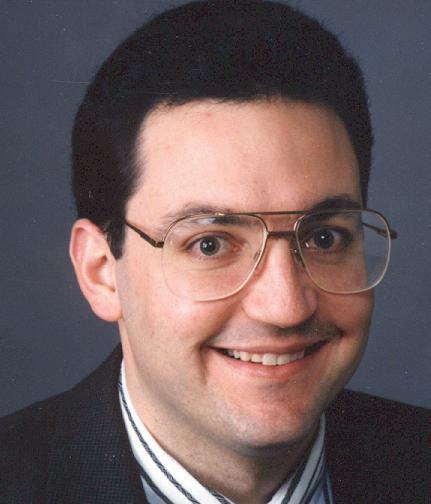
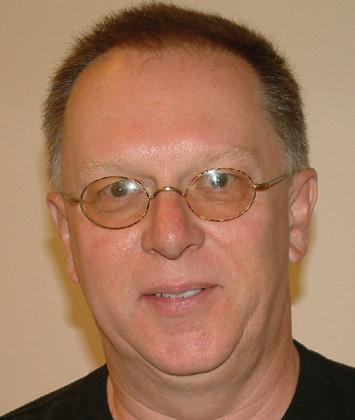
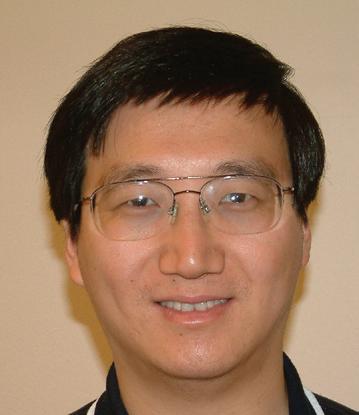
2004 25
photos/Adam Huffer
Gary Yen
Andy Arena
Nigel Jones
Guoliang Fan
ThanksTulsa!
Oklahoma State University is in Tulsa, for Tulsa. We want to thank you for your continuing support of our efforts to meet the educational needs of Tulsa. We recently broke ground on OSU-Tulsa’s Advanced Technology Research Center, which Tulsa County voters made possible through the Vision 2025 initiative. The ATRC demonstrates OSU’s commitment to Tulsa and our leadership role in providing educational programs and promoting economic development in northeastern Oklahoma.

Dr. Karl Reid Dean, OSU College of Engineering, Architecture & Technology
Dr. Gary Trennepohl OSU-Tulsa President

700 N.Greenwood Avenue • 918-594-8000 •www.osu-tulsa.okstate.edu











 Members of the 2004 AGCO competition’s winning design team are, from left, Monica Johnston, Kent Evatt , Candice Johnson and Kody Featherston.
courtesy of BAE
Members of the 2004 AGCO competition’s winning design team are, from left, Monica Johnston, Kent Evatt , Candice Johnson and Kody Featherston.
courtesy of BAE

 adaM HuffEr
OSU civil and environmental engineering students, from left, Brian Cales, Brian Sartain, David Erickson, Matt Youngblood and Julie Russell, placed sixth in the 2004 National Student Steel Bridge Competition.
Adam Huffer
adaM HuffEr
OSU civil and environmental engineering students, from left, Brian Cales, Brian Sartain, David Erickson, Matt Youngblood and Julie Russell, placed sixth in the 2004 National Student Steel Bridge Competition.
Adam Huffer


 Adam Huffer
Newlin
Adam Huffer
Newlin





 courtesy Cowboy Motorsports
adaM HuffEr
courtesy Cowboy Motorsports
adaM HuffEr








 Brothers
M. Jones and Neal E. Jones of Jones Studio Inc. each
Medal
CEAT Dean Karl Reid, left, and Randy Seitsinger, head of the School of Architecture, right, celebrate the careers of architects Neal Jones and Edward Jones, center, at the Lohmann Medal Award ceremony in 2004.
Adam Huffer
Brothers
M. Jones and Neal E. Jones of Jones Studio Inc. each
Medal
CEAT Dean Karl Reid, left, and Randy Seitsinger, head of the School of Architecture, right, celebrate the careers of architects Neal Jones and Edward Jones, center, at the Lohmann Medal Award ceremony in 2004.
Adam Huffer












 Robert Fischer courtesy
Robert Fischer courtesy
















 Outstanding Engineer
Outstanding Engineer



 Jim Bose, director of the CEAT Division of Technology, right, presents a lifetime achievement award to Marvin Smith, emeritus professor in engineering technology, registered professional engineer and patent holder. Smith, who retired in June 2004, served as department head for 20 years before spending another decade directing geothermal heat pump research at OSU. His projects include development of the Slinky heat exchanger, performance evaluation of vertical and horizontal borehole heat exchang-
Adam Huffer
photos/Erika Contreras
Jim Bose, director of the CEAT Division of Technology, right, presents a lifetime achievement award to Marvin Smith, emeritus professor in engineering technology, registered professional engineer and patent holder. Smith, who retired in June 2004, served as department head for 20 years before spending another decade directing geothermal heat pump research at OSU. His projects include development of the Slinky heat exchanger, performance evaluation of vertical and horizontal borehole heat exchang-
Adam Huffer
photos/Erika Contreras













